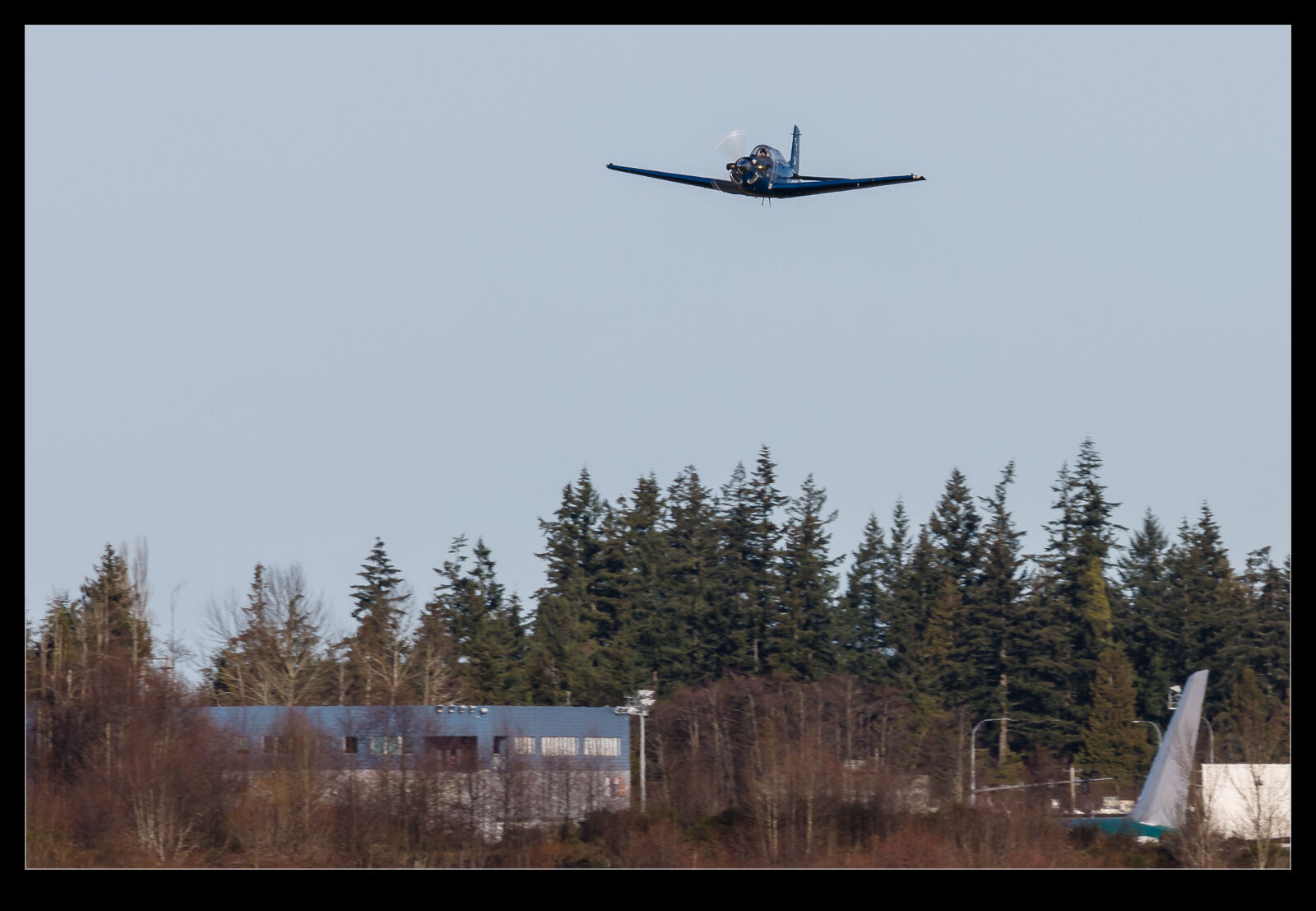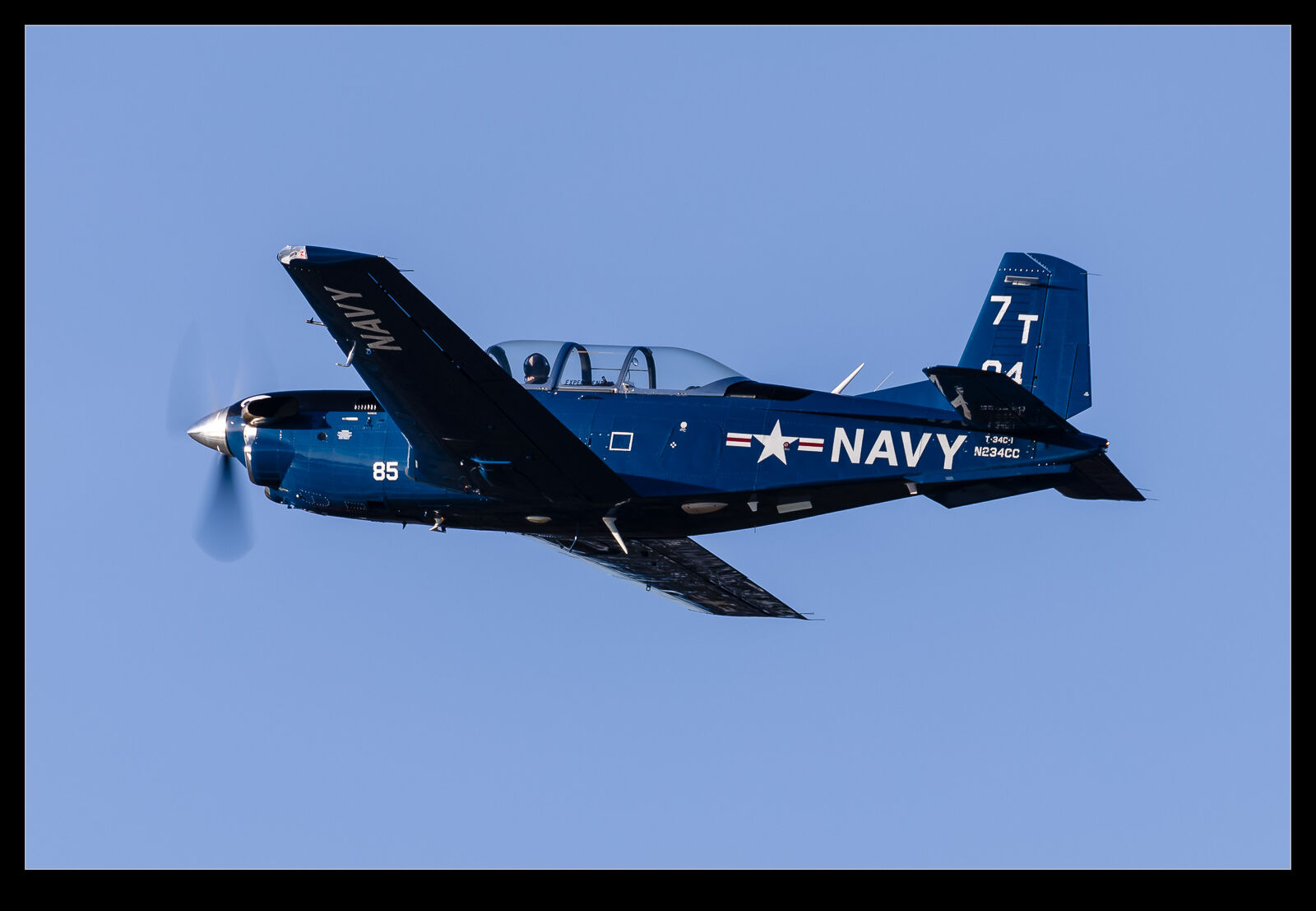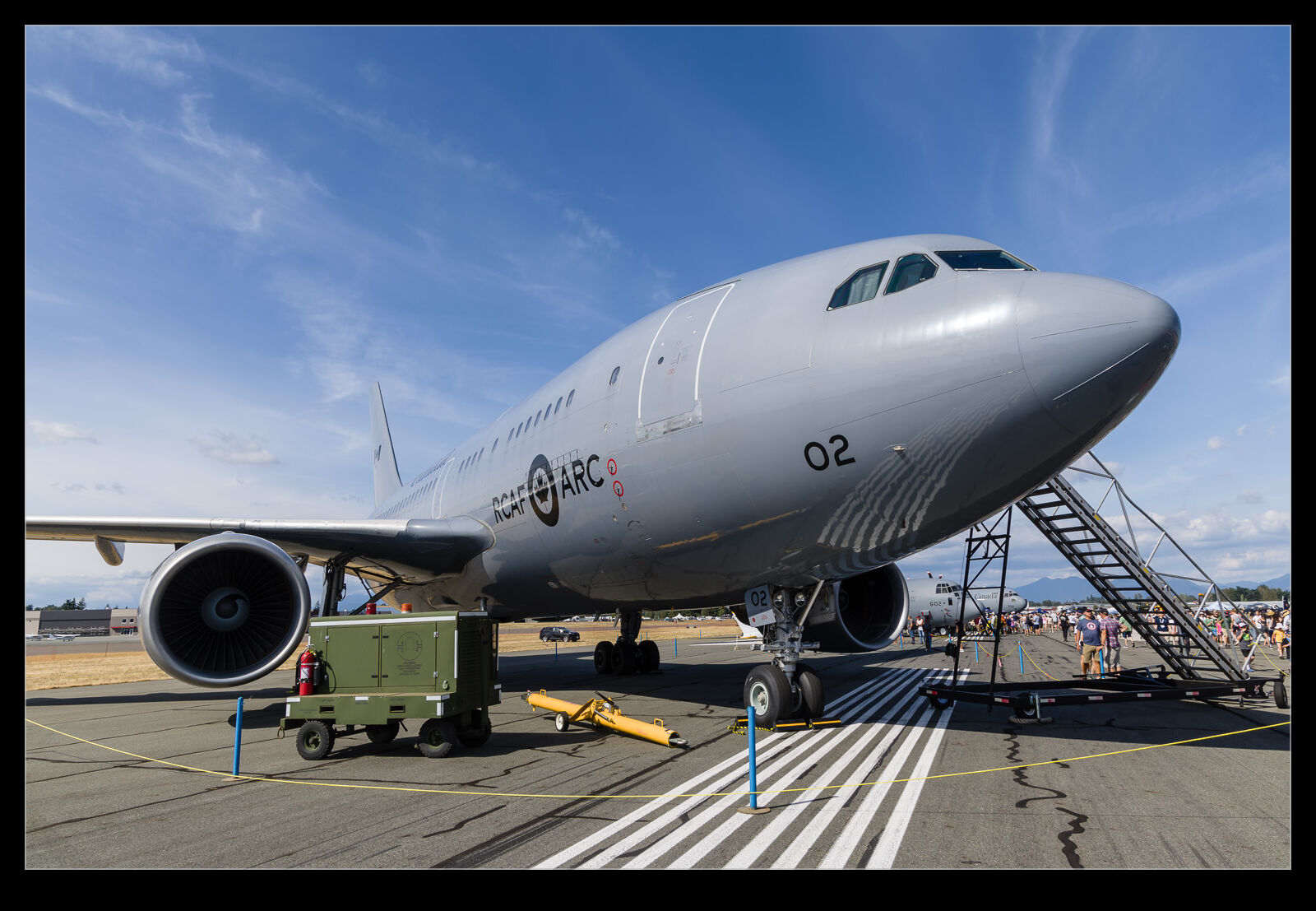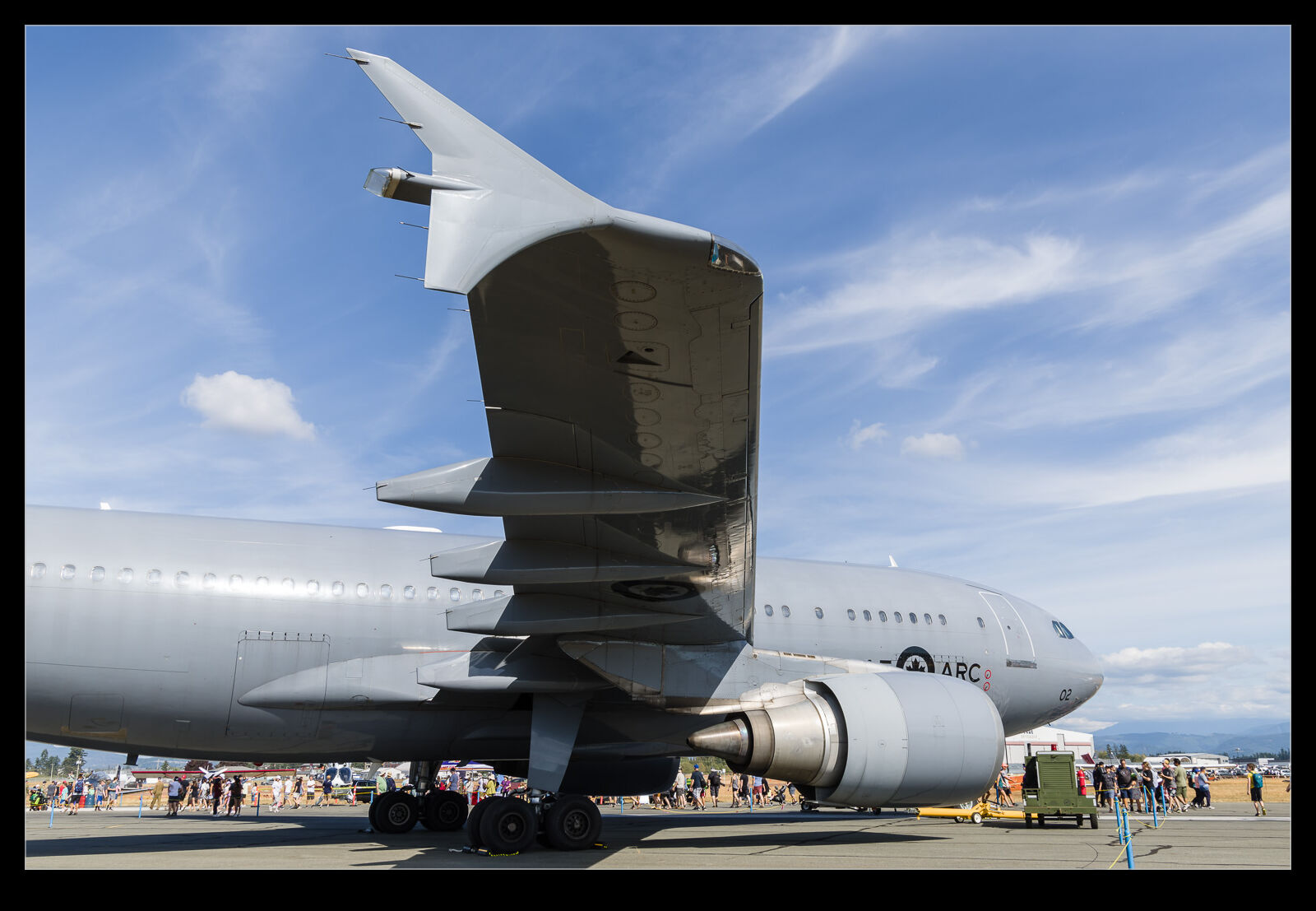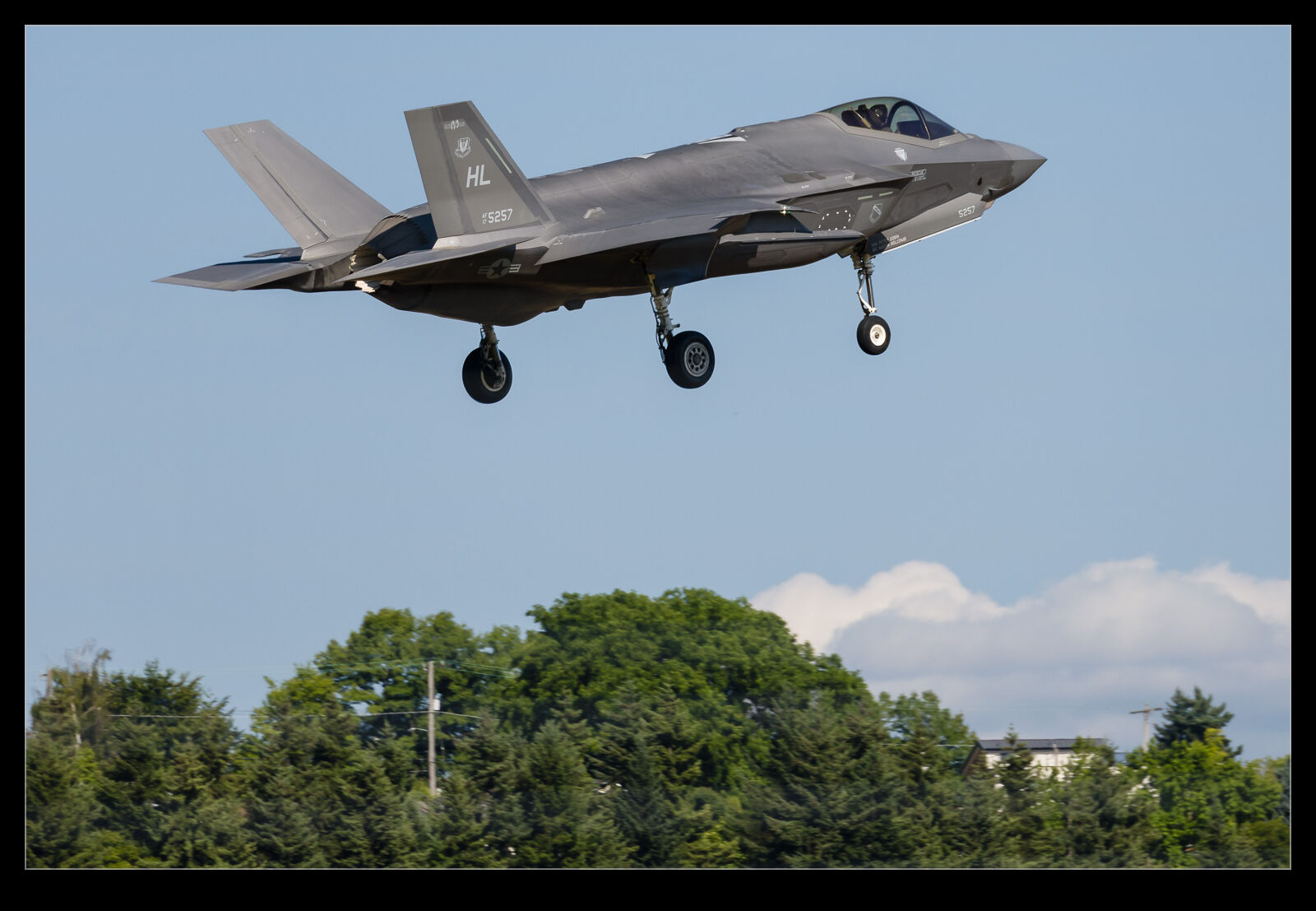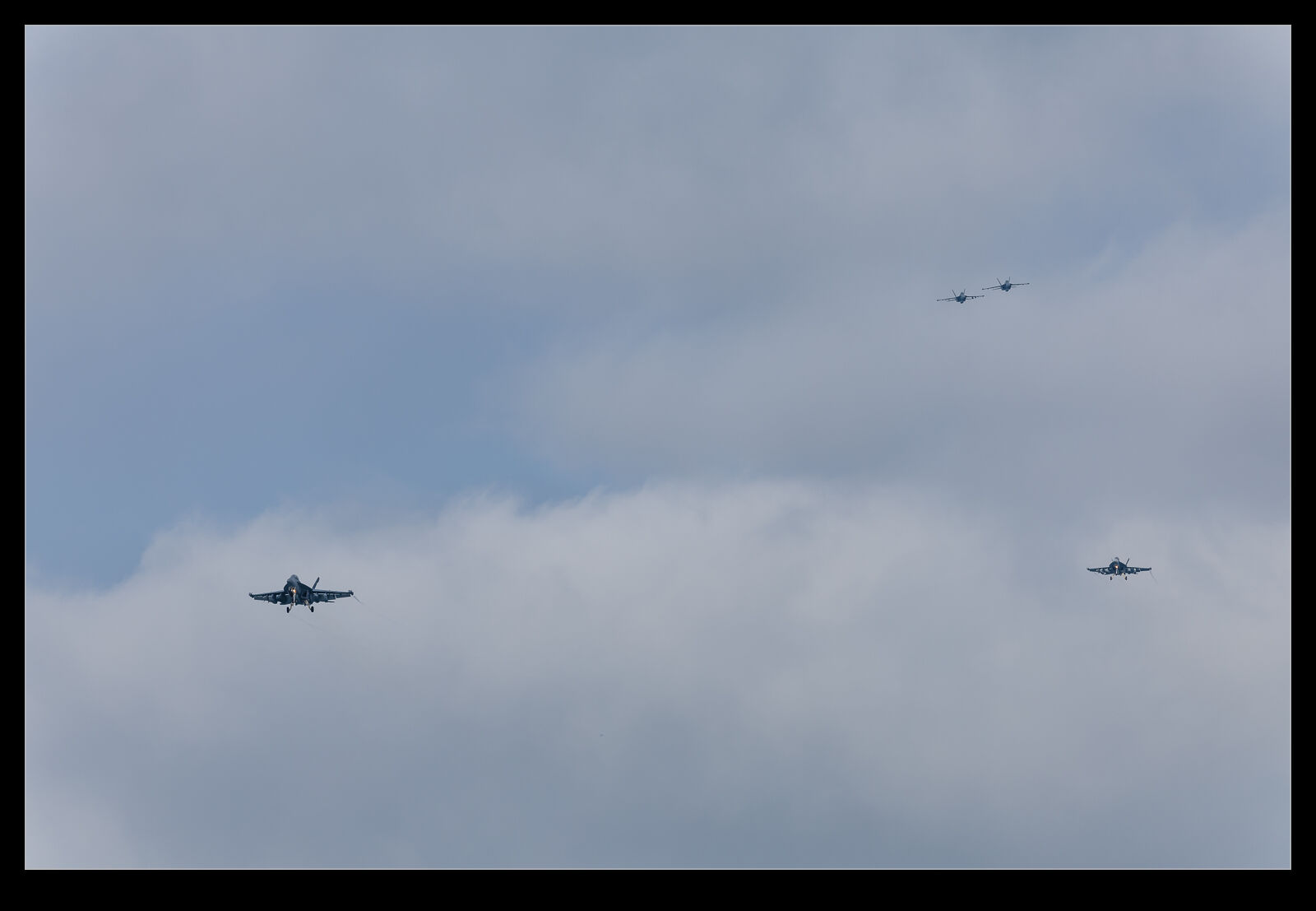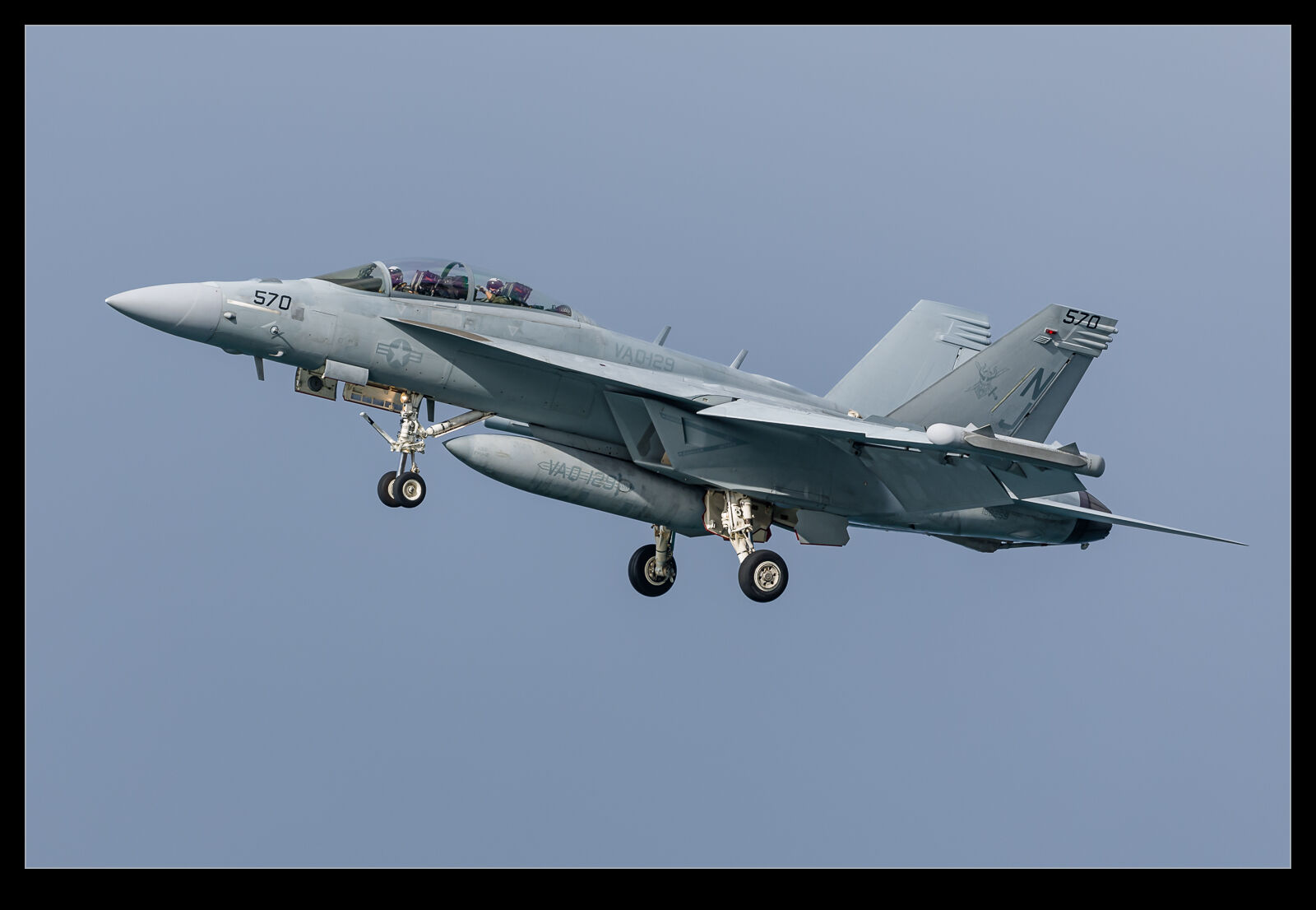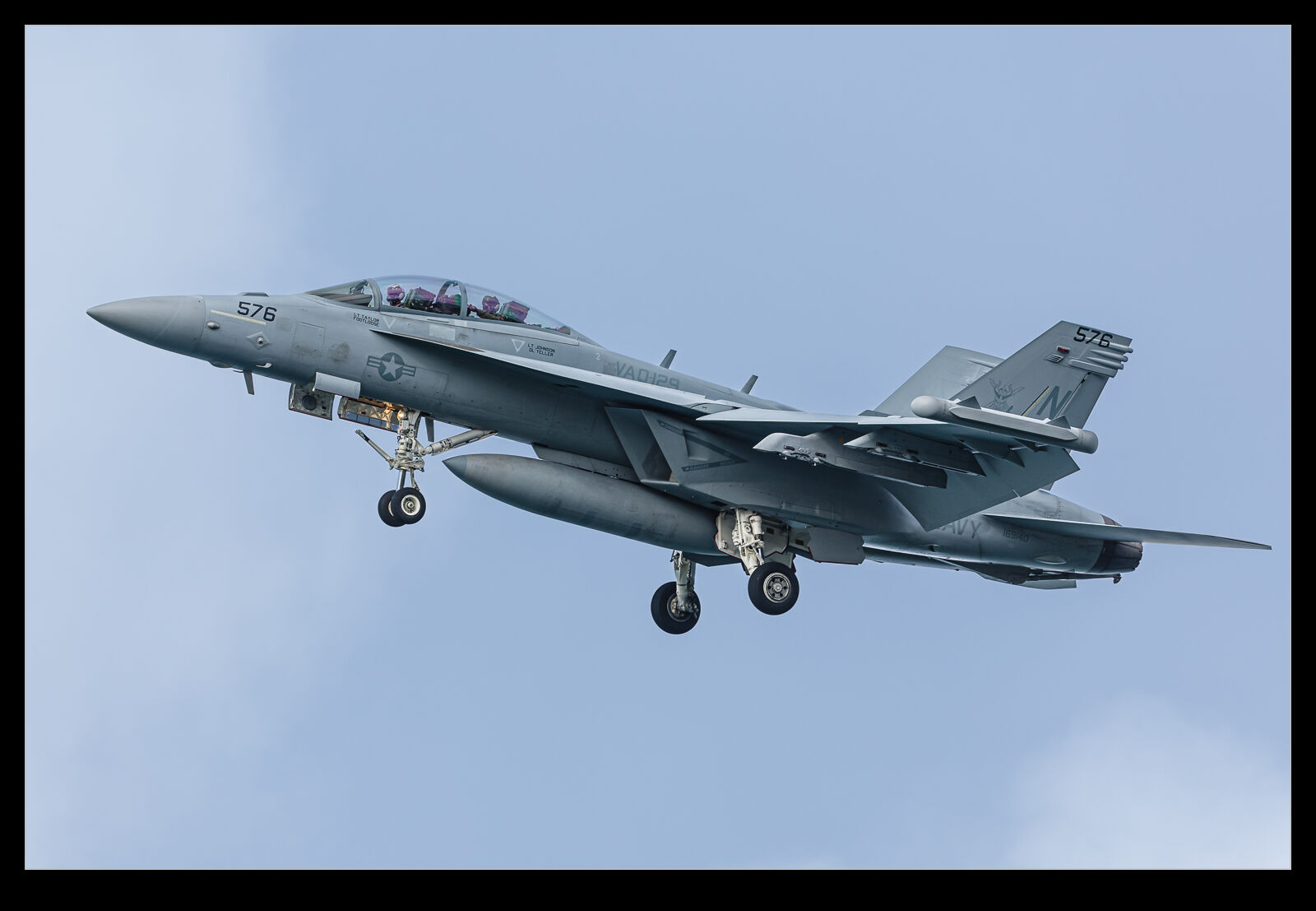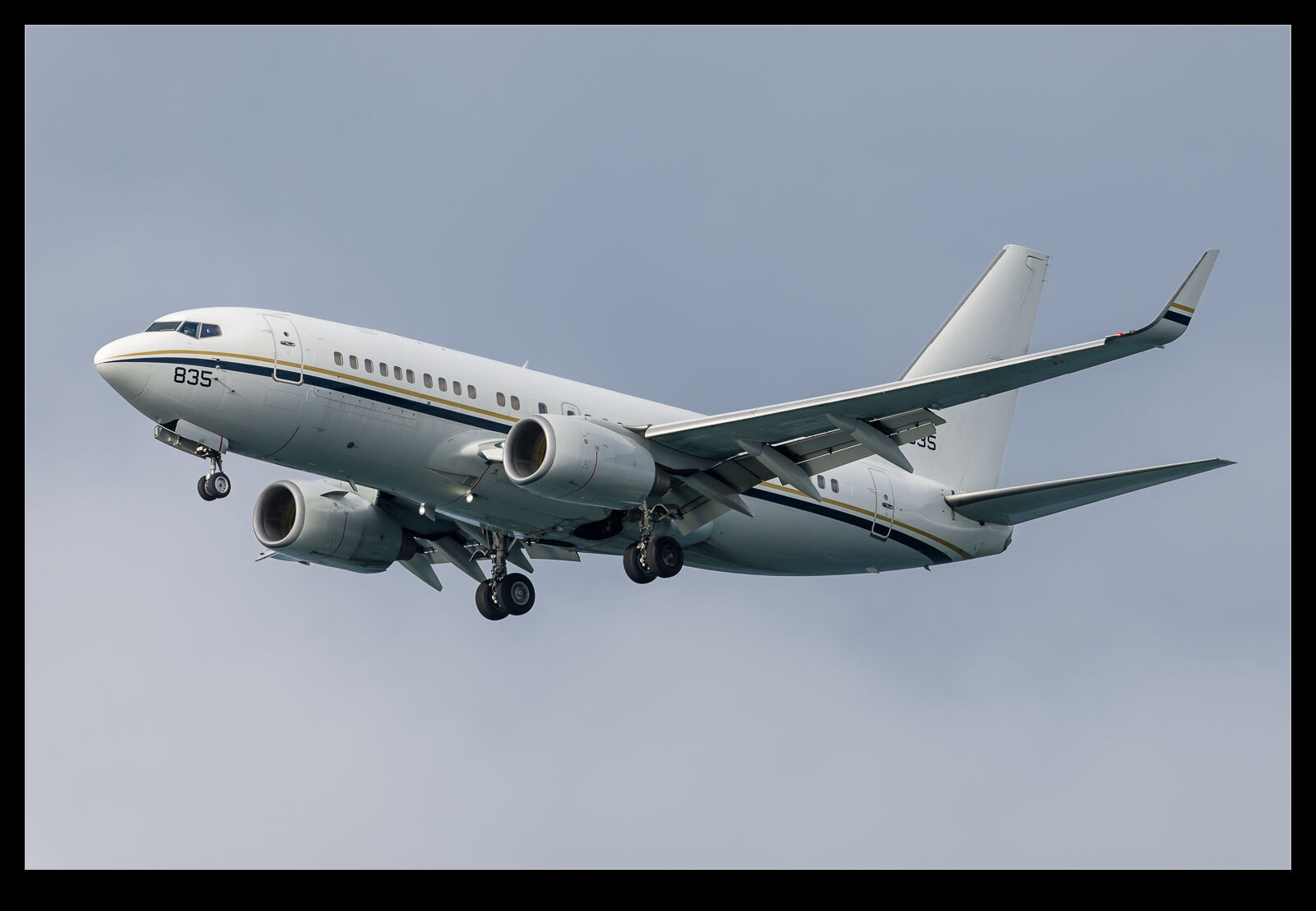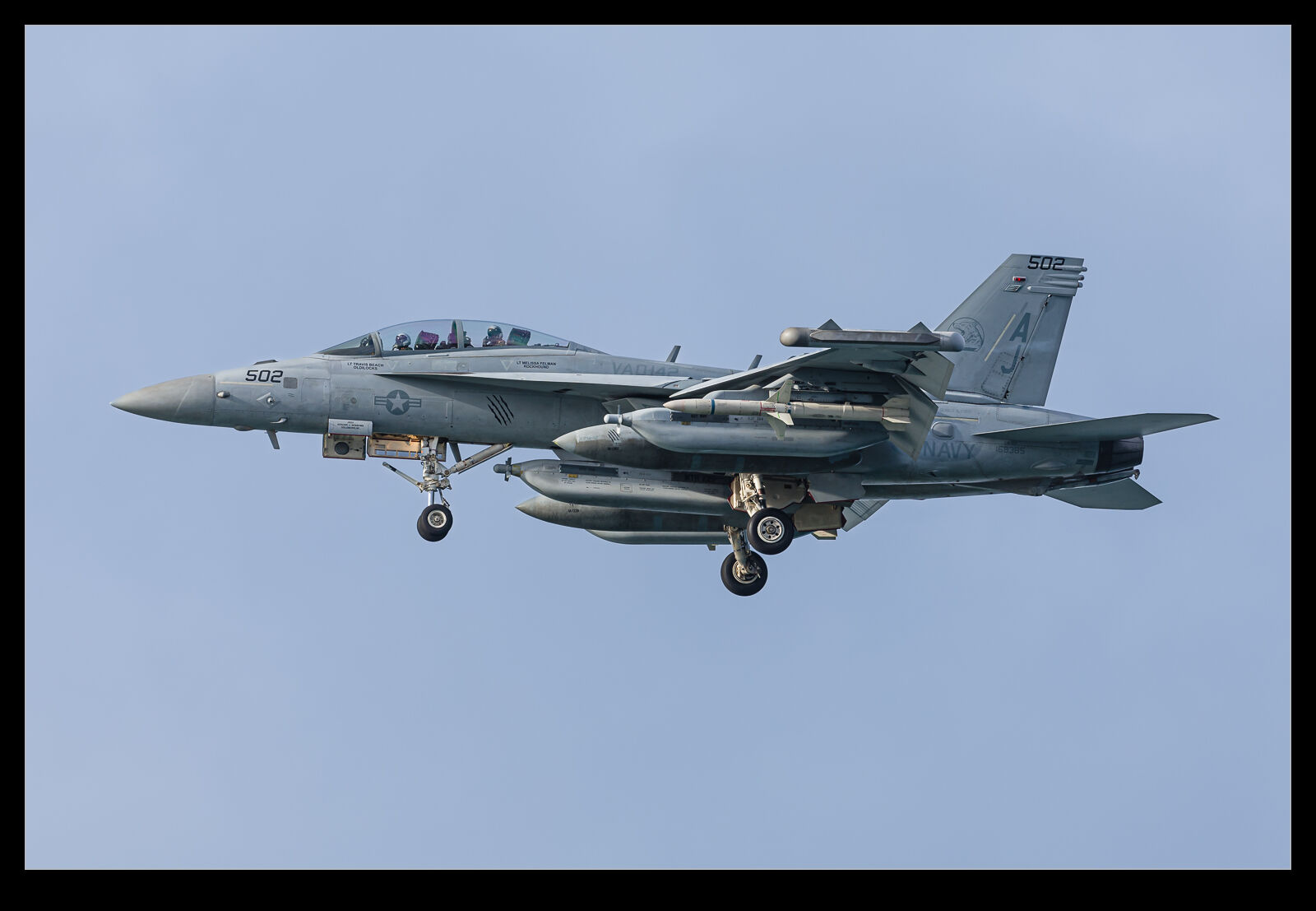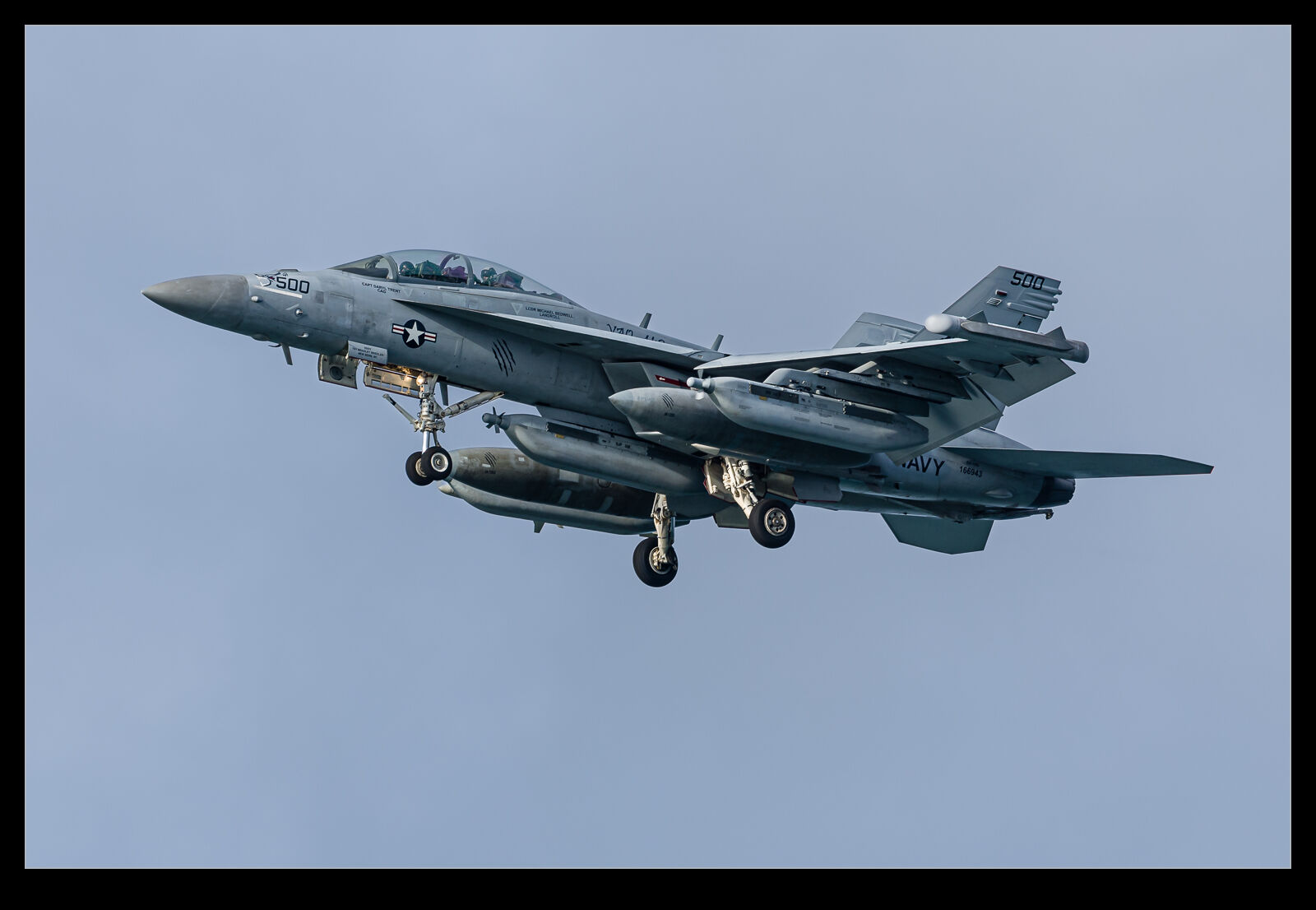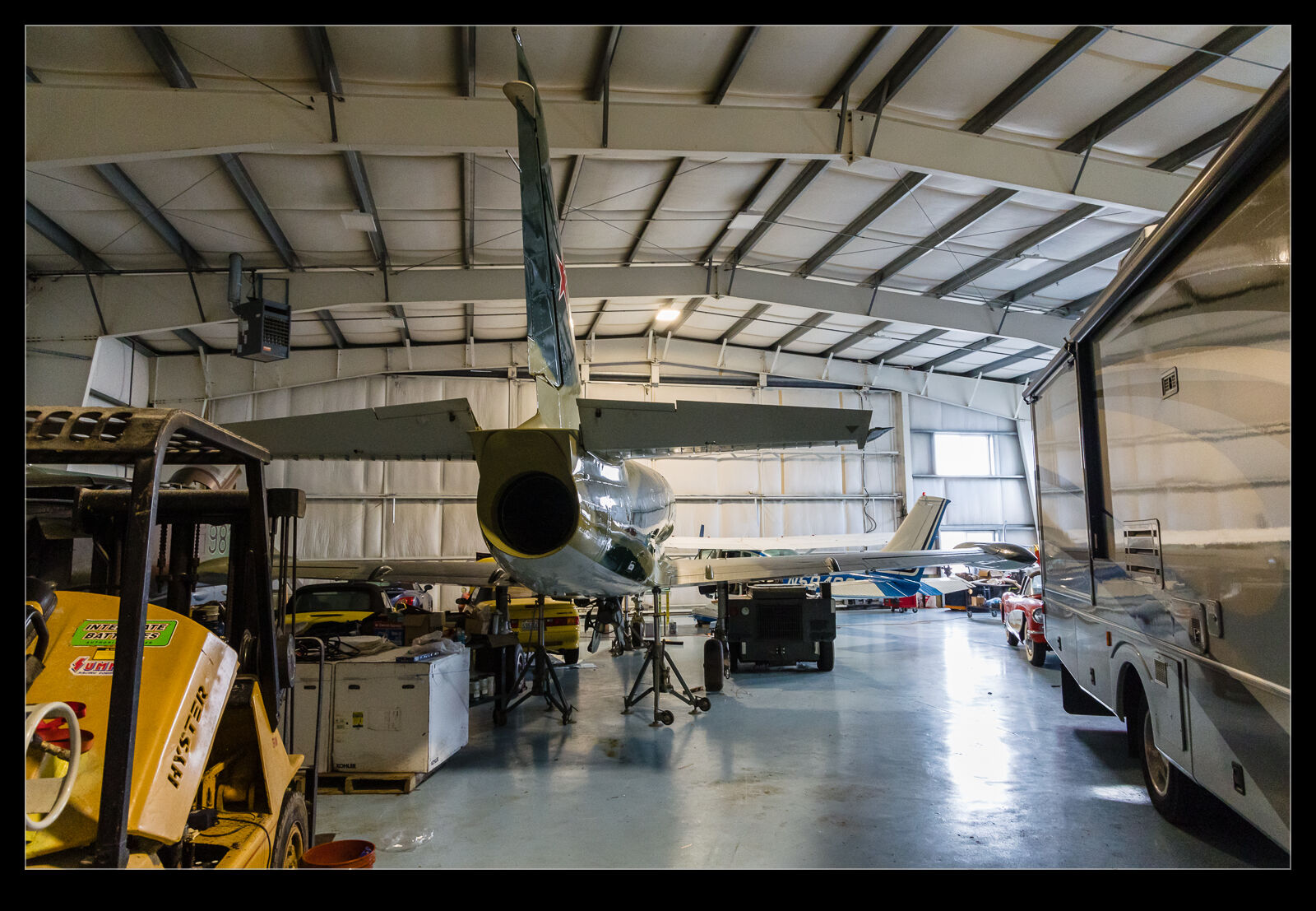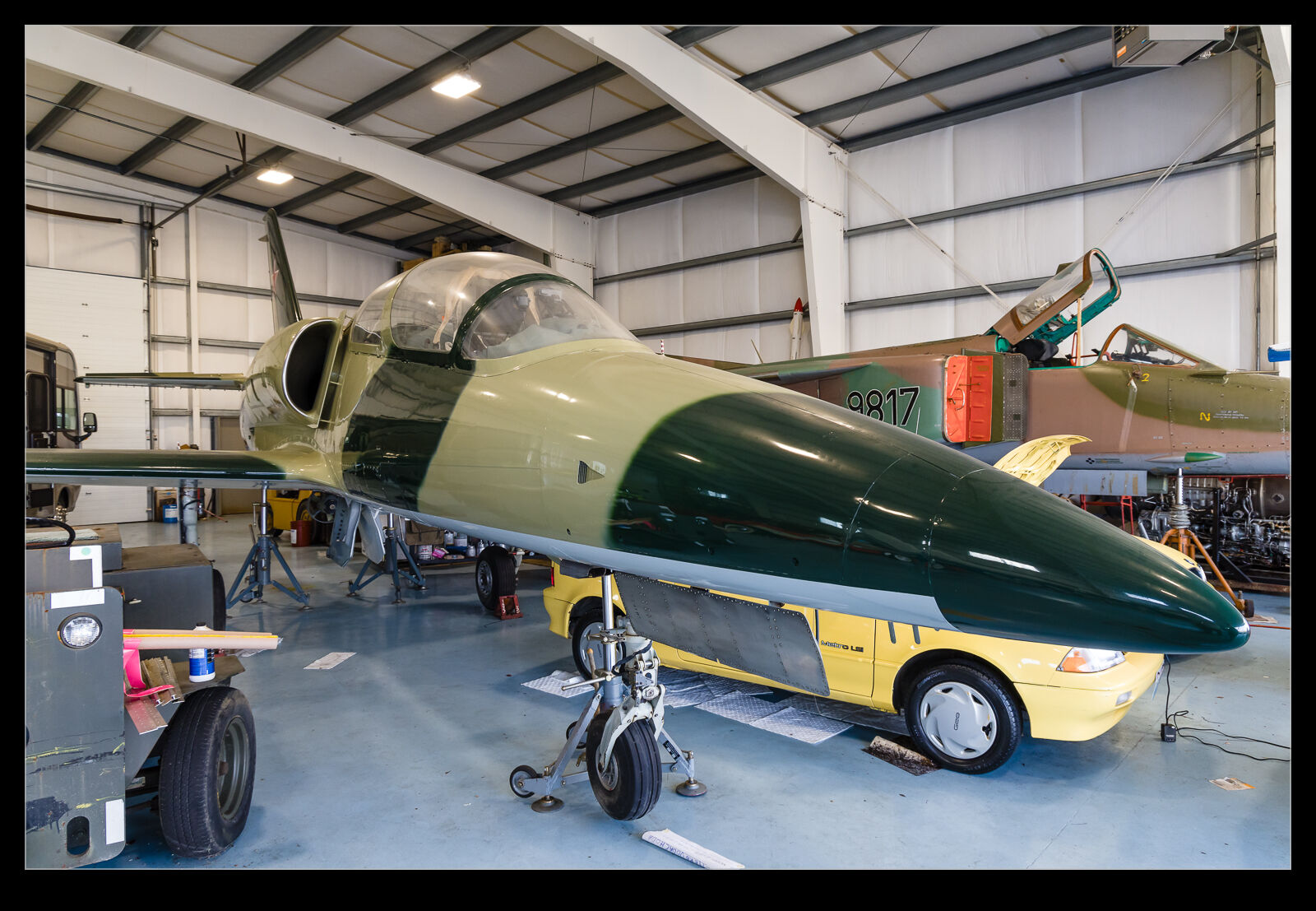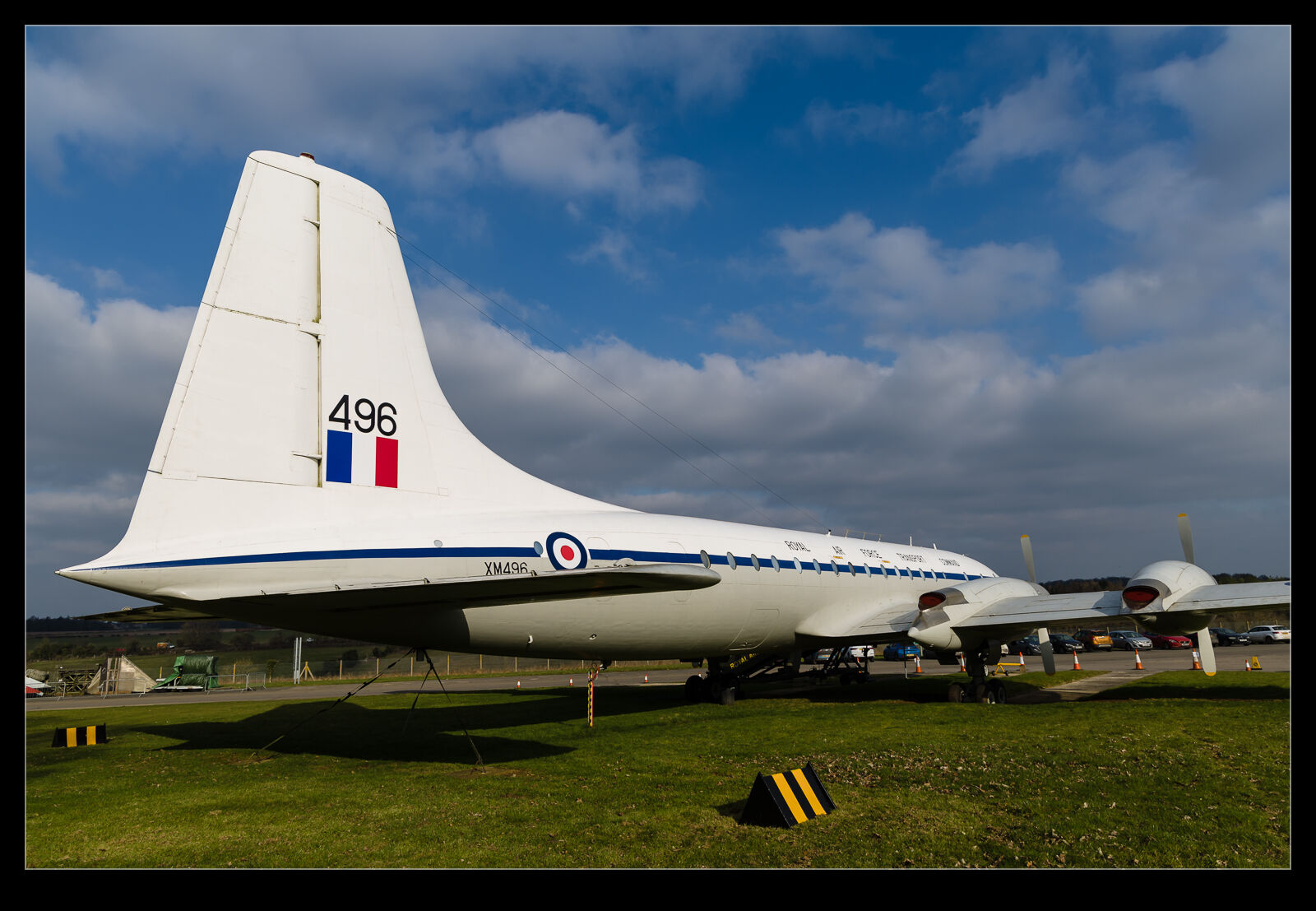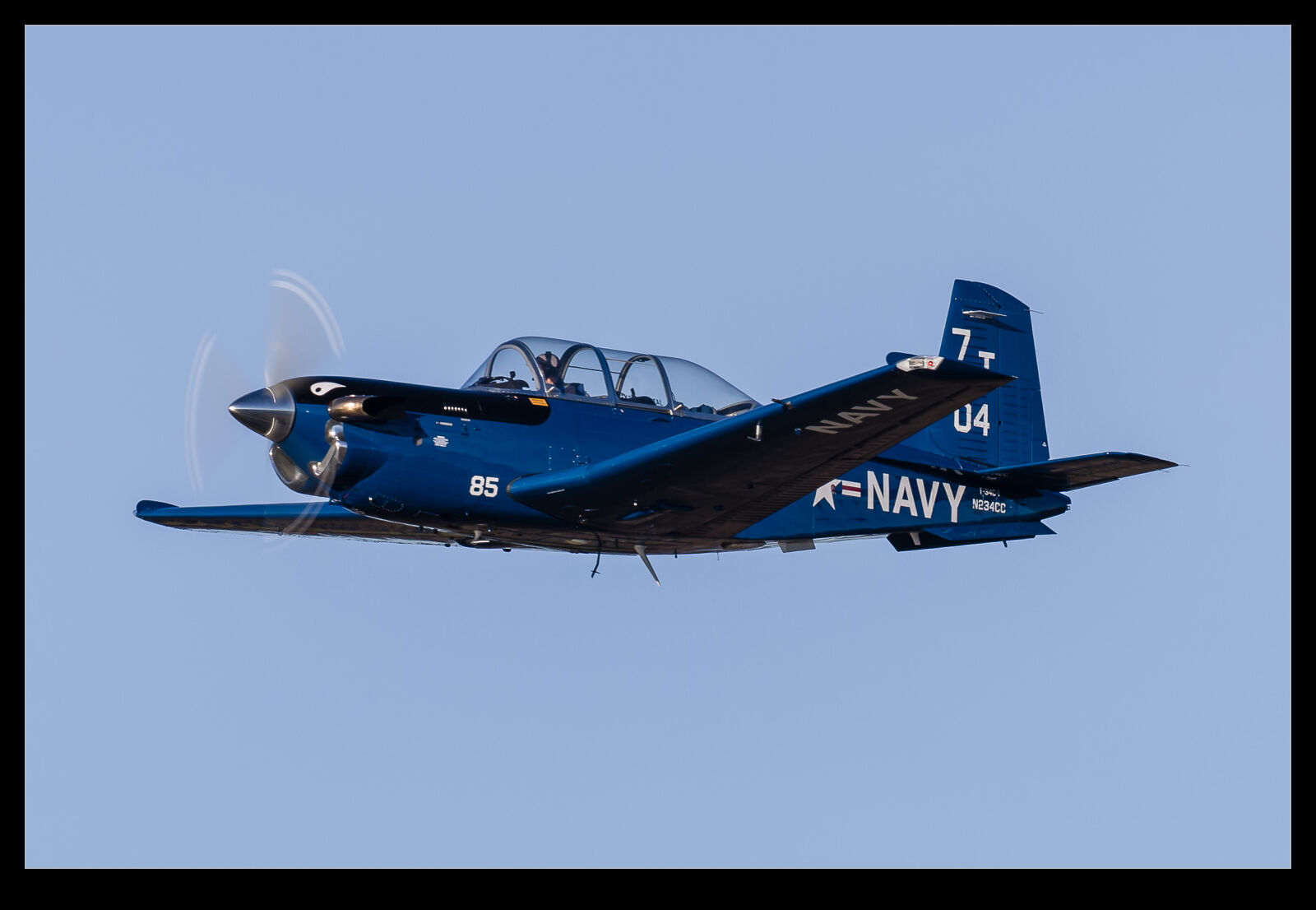 Beech built the Mentor trainer for the military with a piston engine before coming up with the more powerful turboprop version, the T-34C Turbo Mentor. This saw extensive service with the US Navy. Now there are plenty of them on the civil register including this one I saw one day departing from Paine Field. The dark blue paint enhances the look of the plane and it looks like it has plenty of oomph. I imagine it is a ton of fun to have. I think it would be great to shoot air to air as well!
Beech built the Mentor trainer for the military with a piston engine before coming up with the more powerful turboprop version, the T-34C Turbo Mentor. This saw extensive service with the US Navy. Now there are plenty of them on the civil register including this one I saw one day departing from Paine Field. The dark blue paint enhances the look of the plane and it looks like it has plenty of oomph. I imagine it is a ton of fun to have. I think it would be great to shoot air to air as well!
Tag Archives: military
My First Polaris – Just In Time
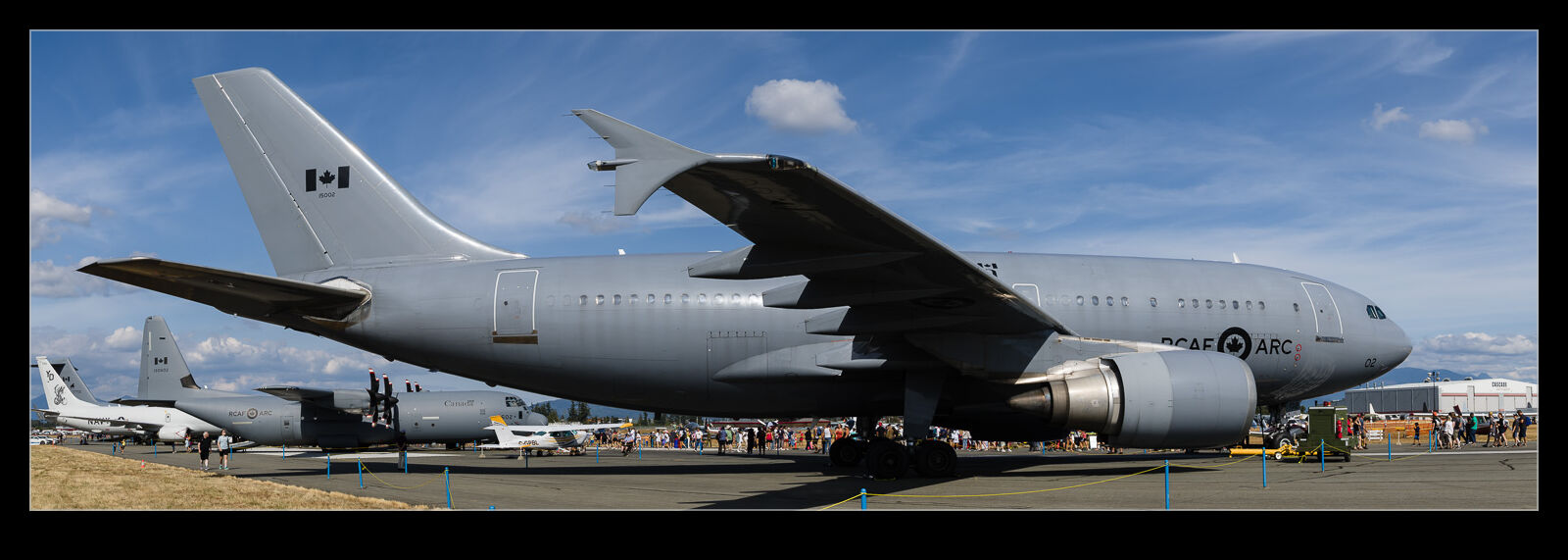 The Royal Canadian Air Force will soon be getting new tanker transport aircraft. They are going to buy some Airbus A330 MRTTs to replace their CC-150 Polaris jets. These are based on the A310 and I have never seen one before. Fortunately, there was one on static display at Abbotsford for the air show. It was in the grey scheme rather than the brightly painted version but that was fine by me. I was just glad to get one before they are replaced. It would be good to see one flying but I suspect the chances of that are diminishing. You never know, though.
The Royal Canadian Air Force will soon be getting new tanker transport aircraft. They are going to buy some Airbus A330 MRTTs to replace their CC-150 Polaris jets. These are based on the A310 and I have never seen one before. Fortunately, there was one on static display at Abbotsford for the air show. It was in the grey scheme rather than the brightly painted version but that was fine by me. I was just glad to get one before they are replaced. It would be good to see one flying but I suspect the chances of that are diminishing. You never know, though.
All Star Flyover Jets But Only Just
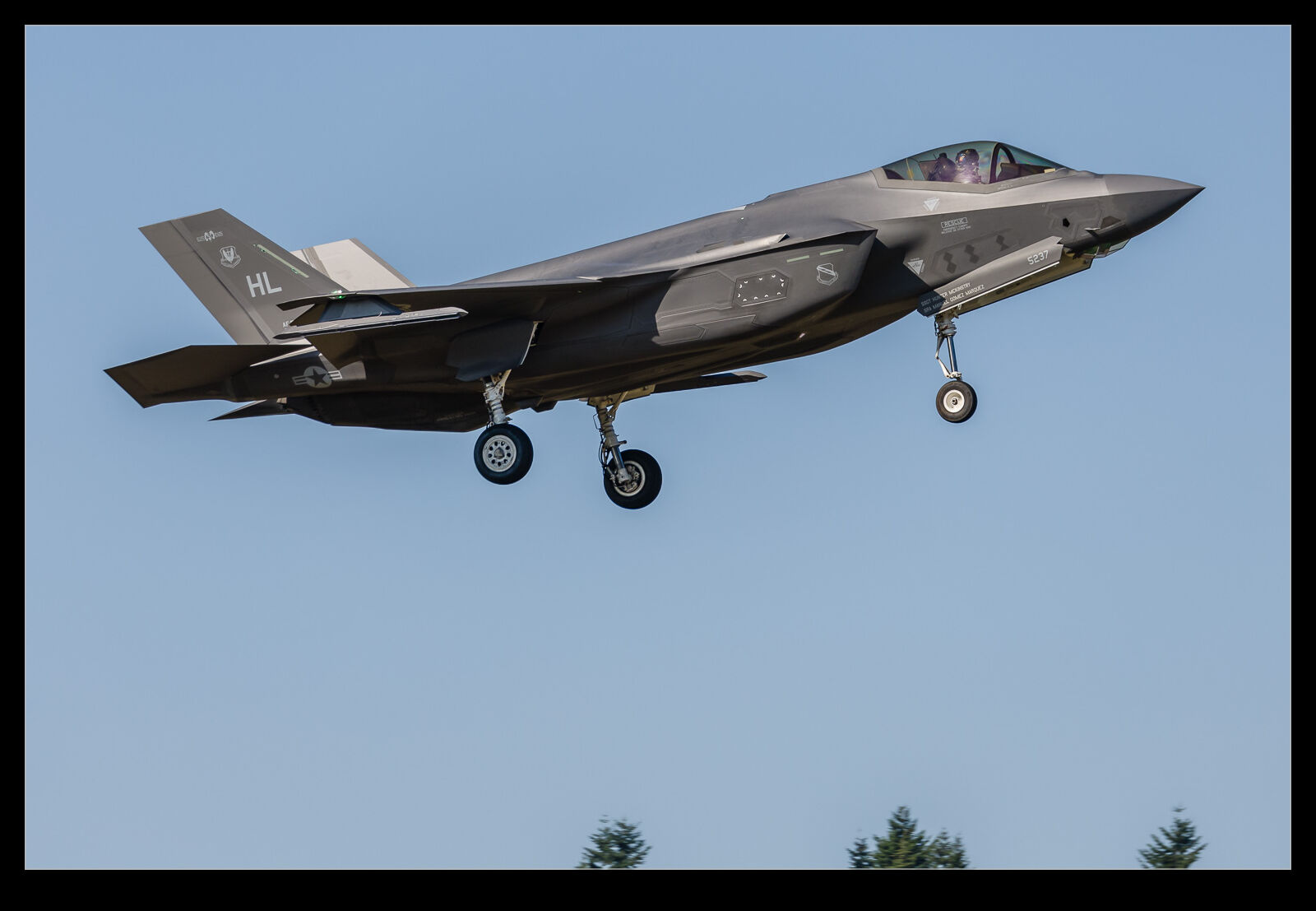 The All-Star baseball game was in Seattle this year. Baseball is not my thing so I wasn’t paying too much attention although I did have a meeting near the stadium and discovered just how much a parking garage will charge on the day of the All-Star game! However, they did have some USAF F-35As in town for the flyover proceedings. I was south of the city later in the day and started to head north close to the time when the game was due to start. I had been hoping that I might get up to Boeing Field for their launch but, as I drove north, I could see the jets pulling off their run over the stadium.
The All-Star baseball game was in Seattle this year. Baseball is not my thing so I wasn’t paying too much attention although I did have a meeting near the stadium and discovered just how much a parking garage will charge on the day of the All-Star game! However, they did have some USAF F-35As in town for the flyover proceedings. I was south of the city later in the day and started to head north close to the time when the game was due to start. I had been hoping that I might get up to Boeing Field for their launch but, as I drove north, I could see the jets pulling off their run over the stadium.
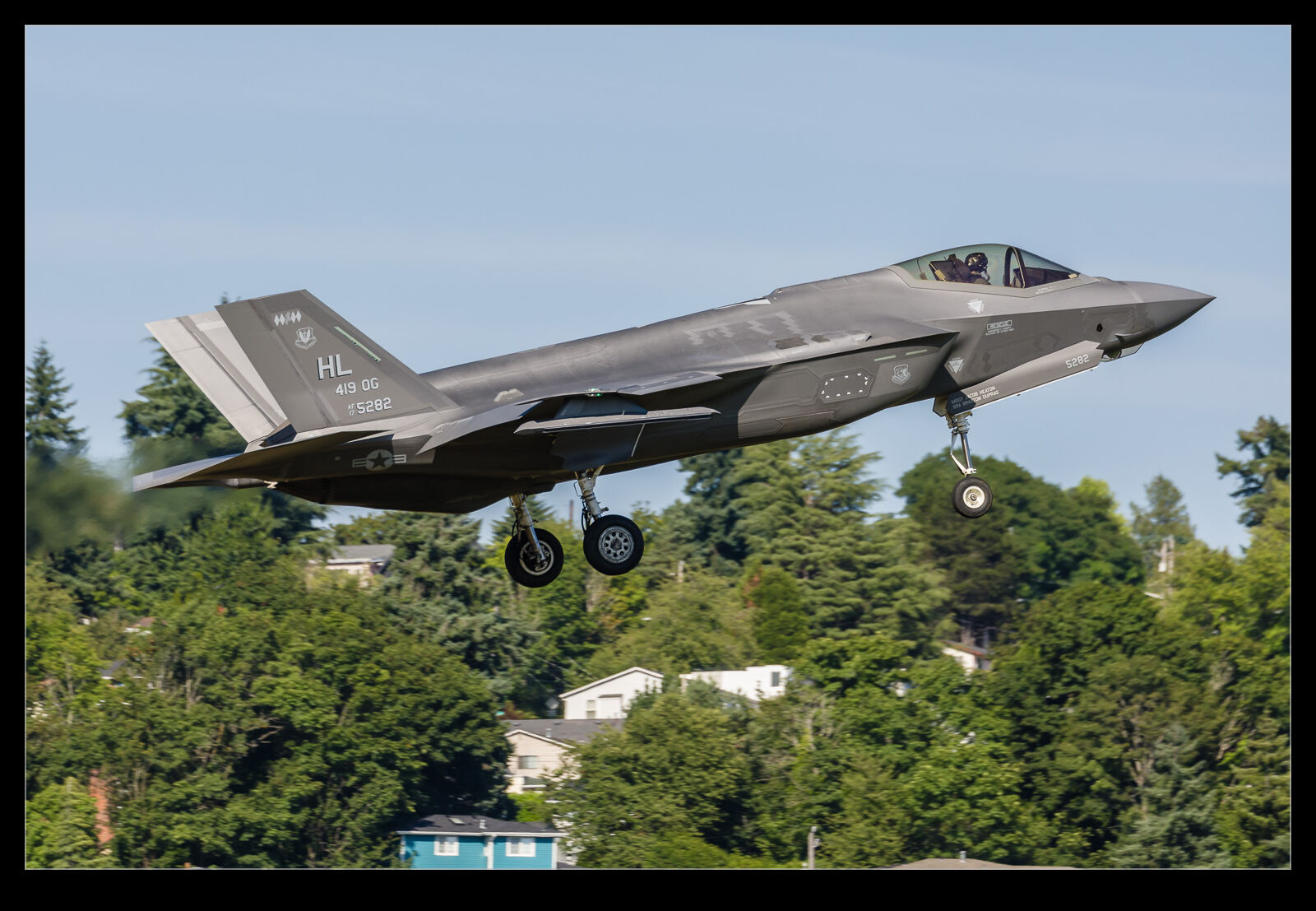 I figured they would recover quickly but headed for the approach end of Boeing Field just in case. Fortunately, they had taken the scenic route and had been touring around Puget Sound. I was there in plenty of time for their landings. One thing that I had not really noticed before about the F-35A is the approach angle of attack that the jet adopts. The planes seem to have quite a nose high attitude when on approach. The radome is short so the field of view is probably not a problem, but I was surprised I had not spotted this previously.
I figured they would recover quickly but headed for the approach end of Boeing Field just in case. Fortunately, they had taken the scenic route and had been touring around Puget Sound. I was there in plenty of time for their landings. One thing that I had not really noticed before about the F-35A is the approach angle of attack that the jet adopts. The planes seem to have quite a nose high attitude when on approach. The radome is short so the field of view is probably not a problem, but I was surprised I had not spotted this previously.
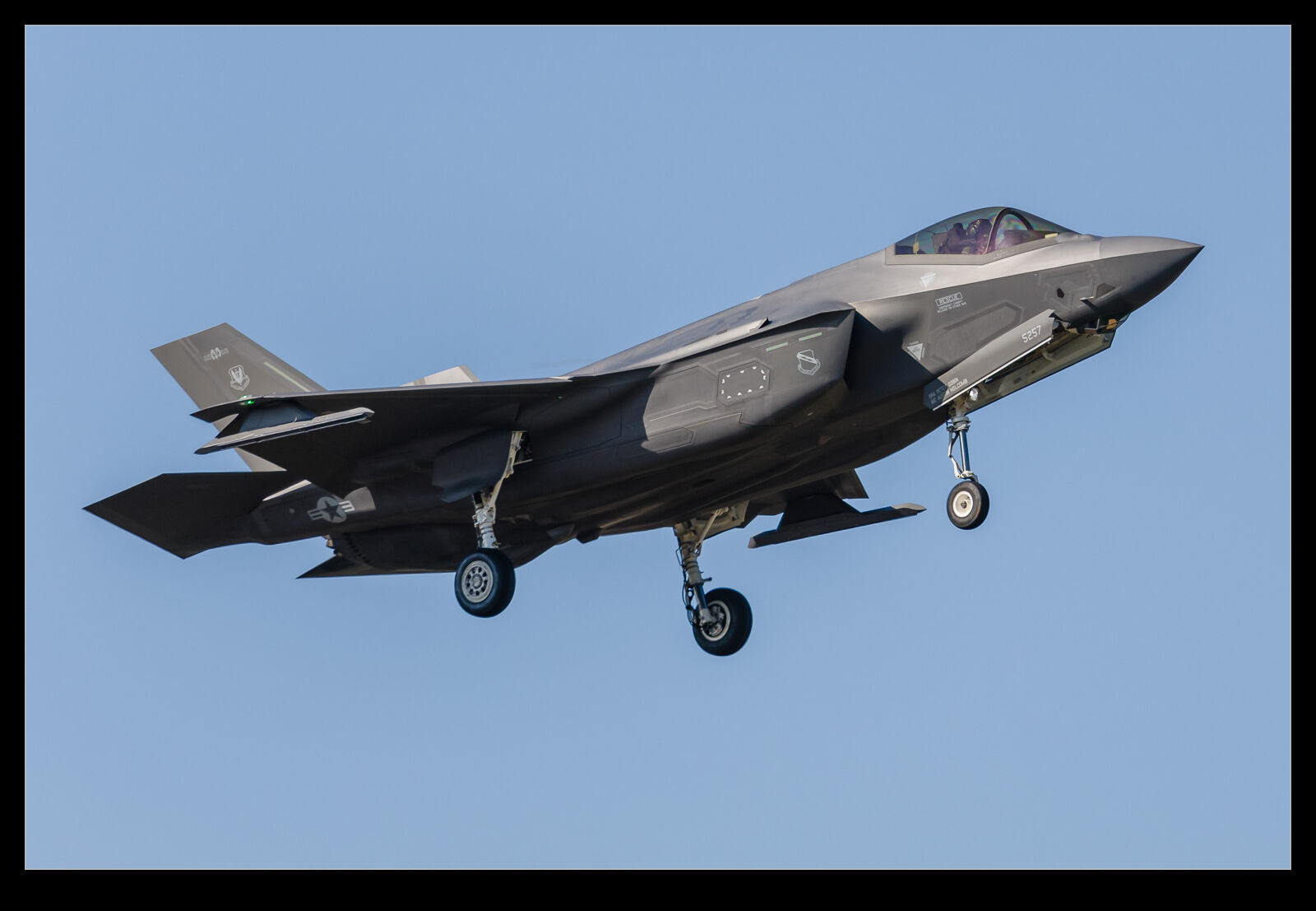 I got the jets all landing but they were really a series of repetitive shots of similar looking jets. Nothing too special but still nice to have a different jet here for a while.
I got the jets all landing but they were really a series of repetitive shots of similar looking jets. Nothing too special but still nice to have a different jet here for a while.
Typhoon Air Data System
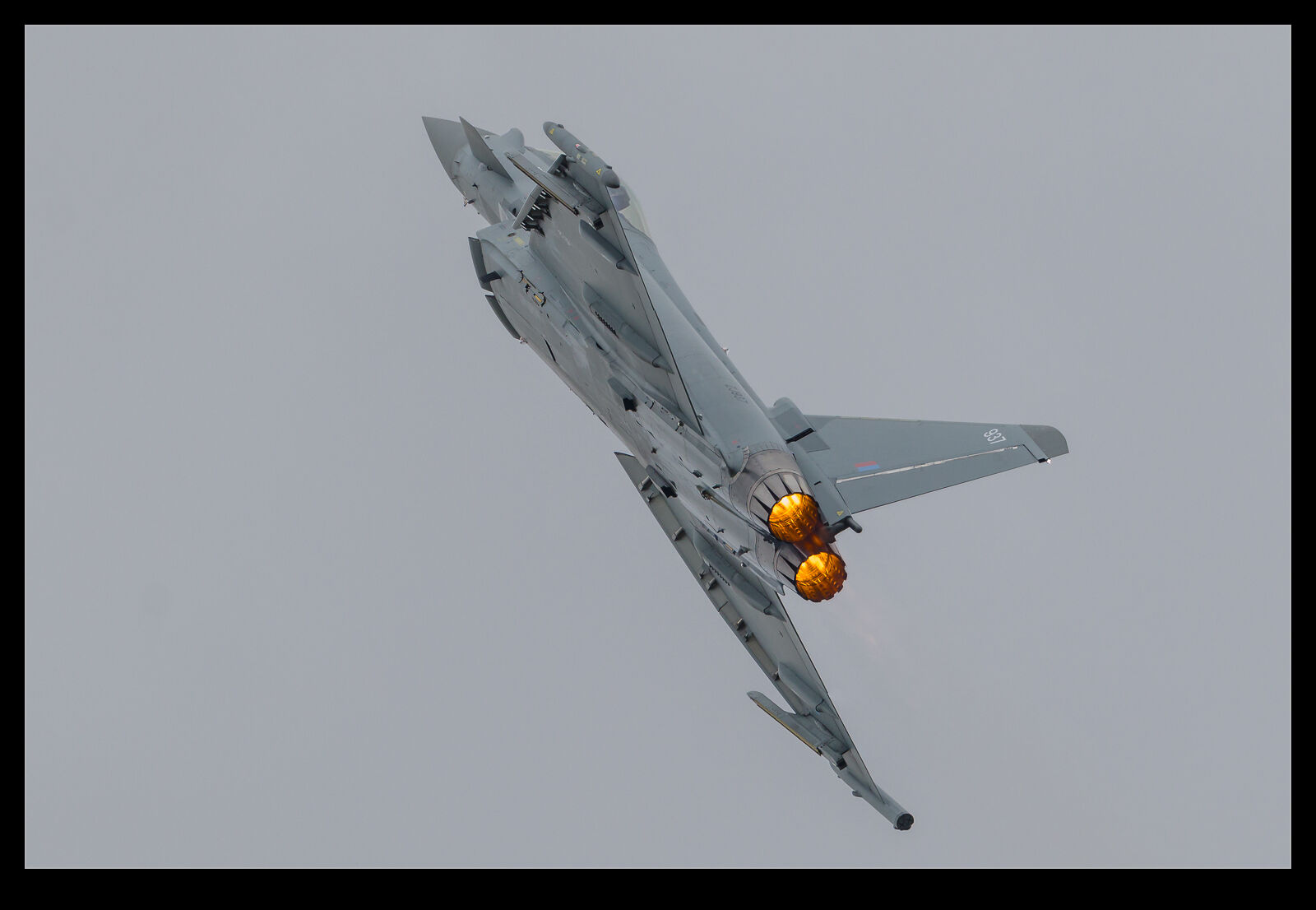
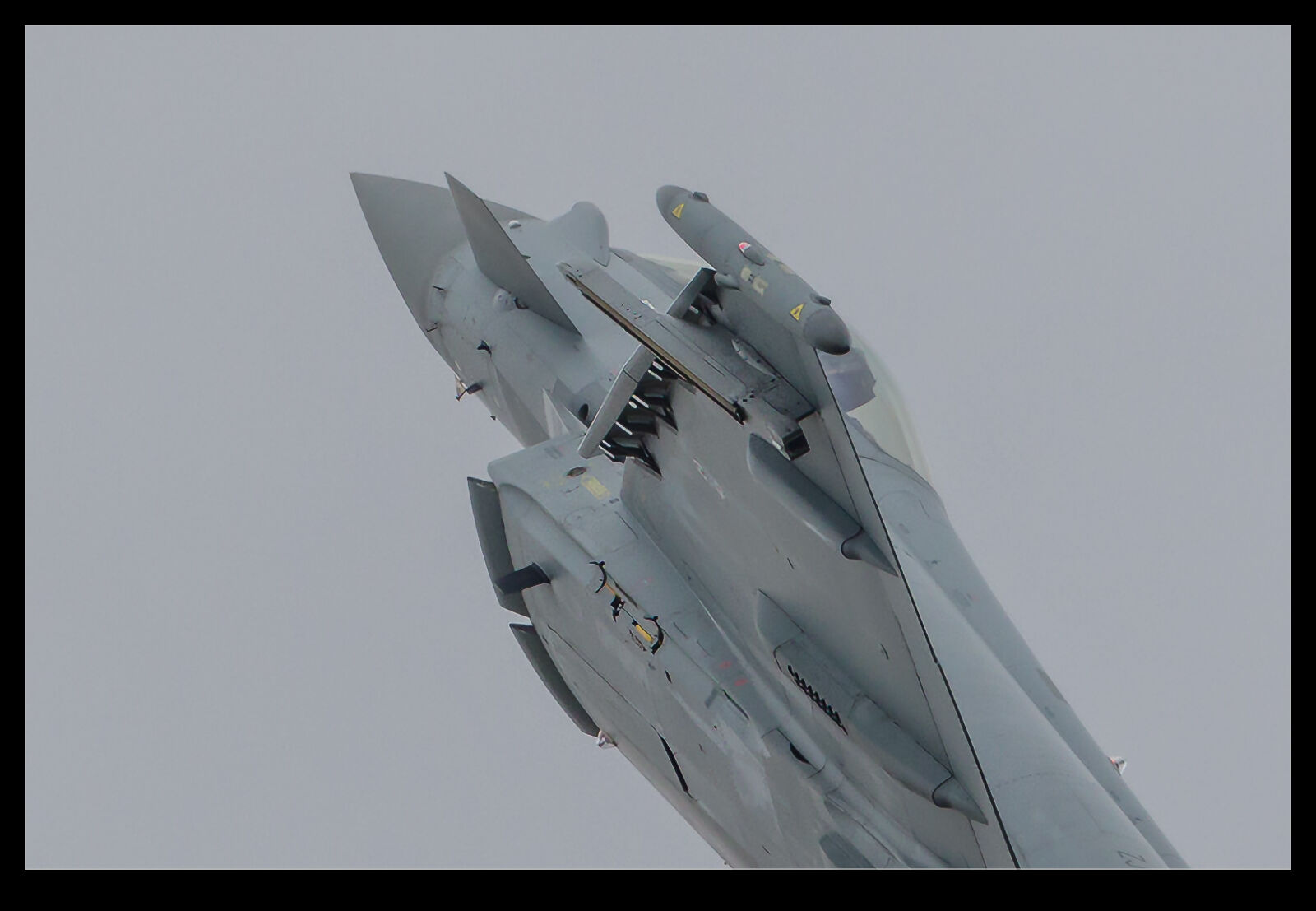 Working through some older shots for another project, I ended up looking at some shots of an RAF Typhoon displaying. As I was zoomed in on some of the shots, it was interesting to see the air data vanes on the underside of the front fuselage as the plane maneuvered. There are several vanes around the underside of the front fuselage and the differences between them can tell yaw and pitch angles. In one shot when the jet was climbing straight up, the vanes are all pointing in similar directions. Shortly before this, as the jet was pulling hard, the angle of attack was higher and the flow up around the front fuselage results in some significant differences in vane angle.
Working through some older shots for another project, I ended up looking at some shots of an RAF Typhoon displaying. As I was zoomed in on some of the shots, it was interesting to see the air data vanes on the underside of the front fuselage as the plane maneuvered. There are several vanes around the underside of the front fuselage and the differences between them can tell yaw and pitch angles. In one shot when the jet was climbing straight up, the vanes are all pointing in similar directions. Shortly before this, as the jet was pulling hard, the angle of attack was higher and the flow up around the front fuselage results in some significant differences in vane angle.
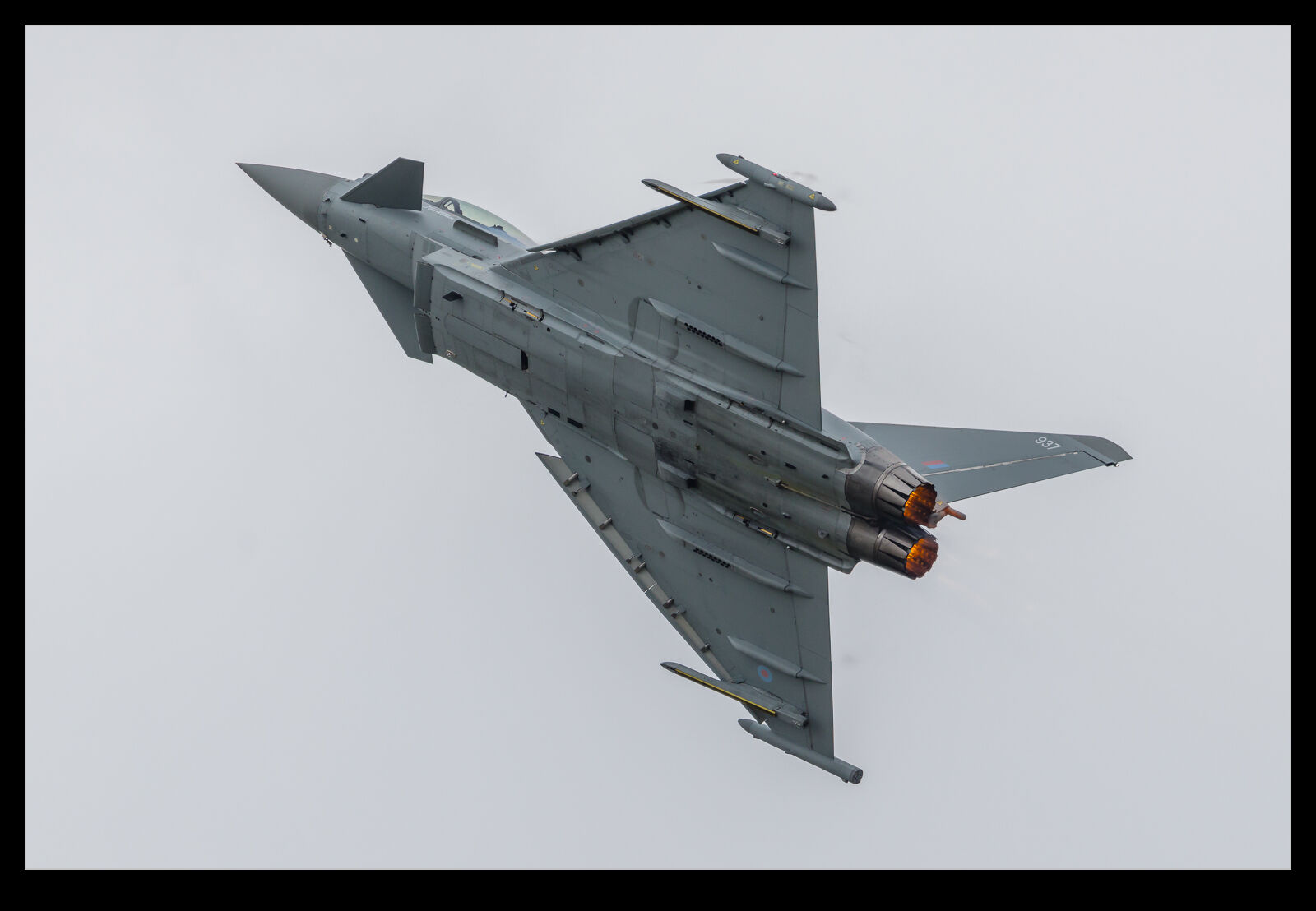
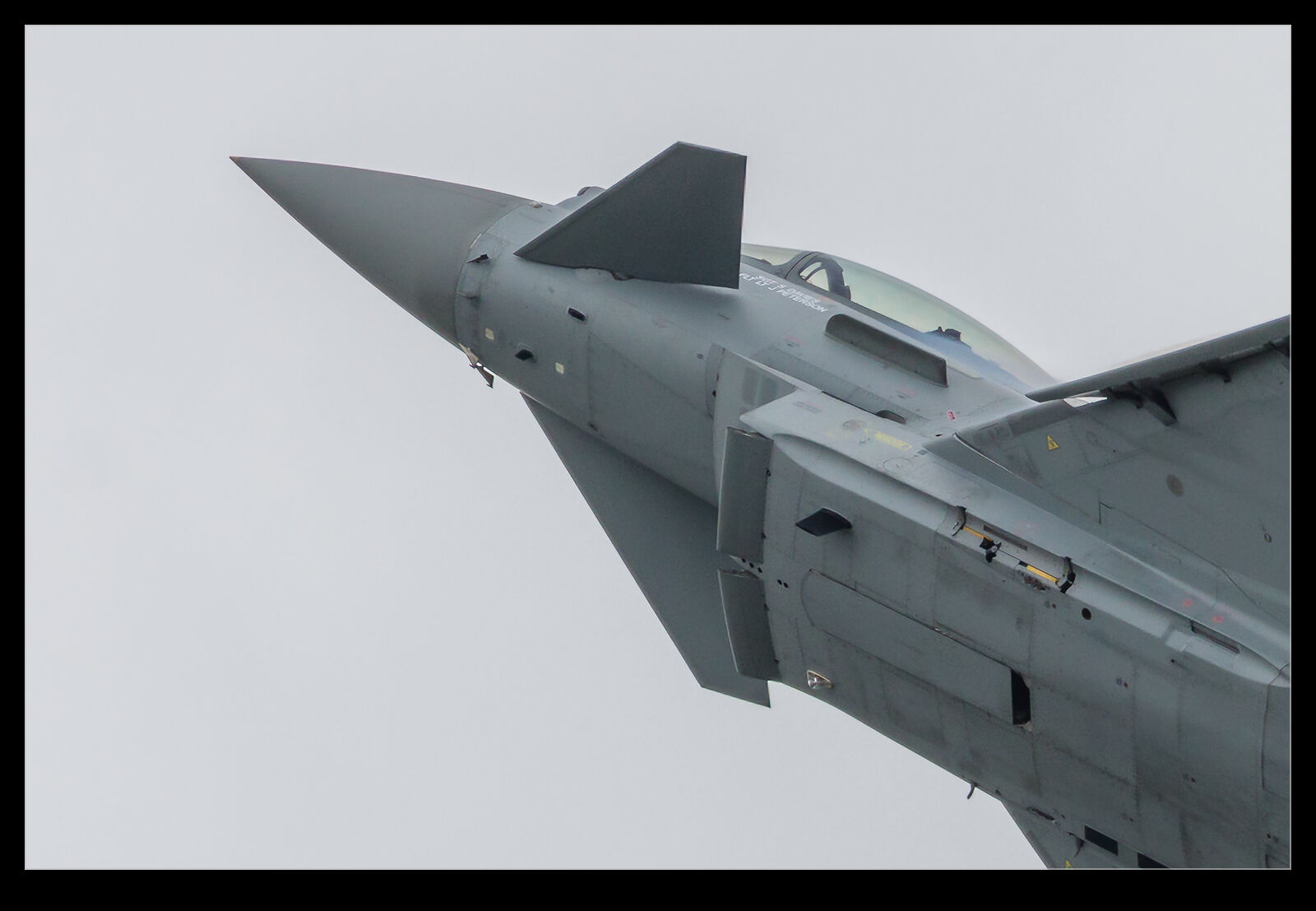 This is the sort of thing that is very important when designing and clearing a flight control system. We had a front fuselage wind tunnel model for the Typhoon during the development program. This was used for intake design but also for air data system modeling. The way in which the various vanes move is vital to understanding the control law requirements. It is also important when considering failure modes. If one vane should fail, how much it impacts the flight control behavior and how much the system detect the failure. Will the aircraft be vulnerable to control loss in the interim? The Tornado did not have as complex a flight control system, but it did have augmentation of the controls and, as it rolled, you would get quite different readings from the angle of attack probes on each side of the fuselage. How much of a difference was normal versus what was a failure was an interesting analysis problem which I enjoyed working on. My days on Typhoon were relatively limited and shortly before first flight so I never got involved with the results of the testing program, but I do enjoy looking at the resulting aircraft whenever I get the chance.
This is the sort of thing that is very important when designing and clearing a flight control system. We had a front fuselage wind tunnel model for the Typhoon during the development program. This was used for intake design but also for air data system modeling. The way in which the various vanes move is vital to understanding the control law requirements. It is also important when considering failure modes. If one vane should fail, how much it impacts the flight control behavior and how much the system detect the failure. Will the aircraft be vulnerable to control loss in the interim? The Tornado did not have as complex a flight control system, but it did have augmentation of the controls and, as it rolled, you would get quite different readings from the angle of attack probes on each side of the fuselage. How much of a difference was normal versus what was a failure was an interesting analysis problem which I enjoyed working on. My days on Typhoon were relatively limited and shortly before first flight so I never got involved with the results of the testing program, but I do enjoy looking at the resulting aircraft whenever I get the chance.
The Cormorant Beats Me Again
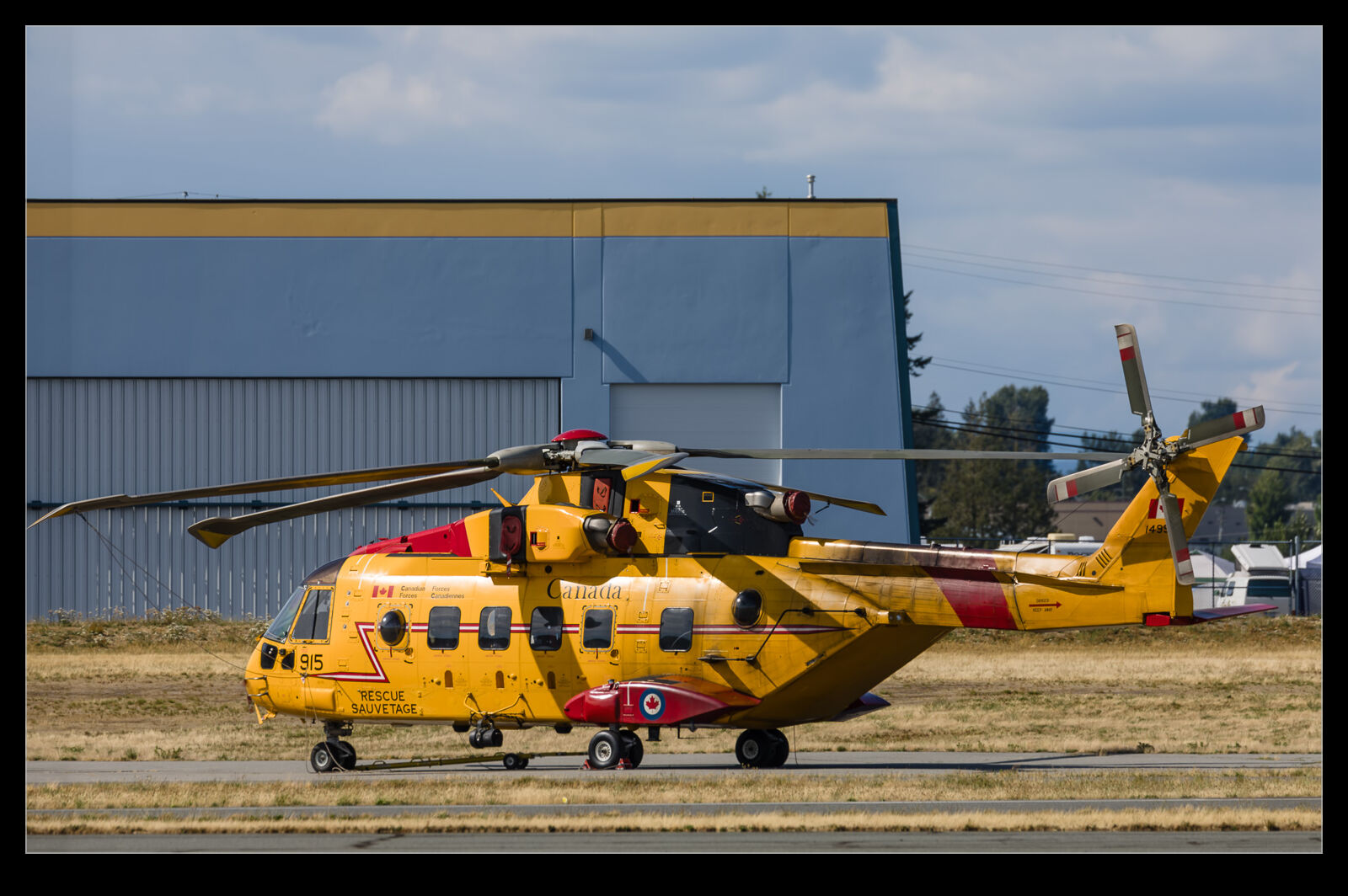 One of my goals for going to the air show at Abbotsford this year was to see a Cormorant fly. I know this would sound like my normal interest in the bird species but this time it means the AW101 version that is flown for Search and Rescue by Canada. Sure, I have seen plenty of 101s over the years with the British and Italian examples, but I have never seen a Canadian one before. It was due to display during the show. When I got there, I was delighted to see it sitting on the operating ramp.
One of my goals for going to the air show at Abbotsford this year was to see a Cormorant fly. I know this would sound like my normal interest in the bird species but this time it means the AW101 version that is flown for Search and Rescue by Canada. Sure, I have seen plenty of 101s over the years with the British and Italian examples, but I have never seen a Canadian one before. It was due to display during the show. When I got there, I was delighted to see it sitting on the operating ramp.
However, my optimism was unjustified. There was no announcement during the show about what had happened to the SAR demo, but it just didn’t happen. The day shows did get the demo, but the Friday evening show was a no go. It was a fun show, so I wasn’t too disappointed, but it was a little frustrating to still have never seen a Cormorant airborne. One day…
Ault Field Morning Arrivals
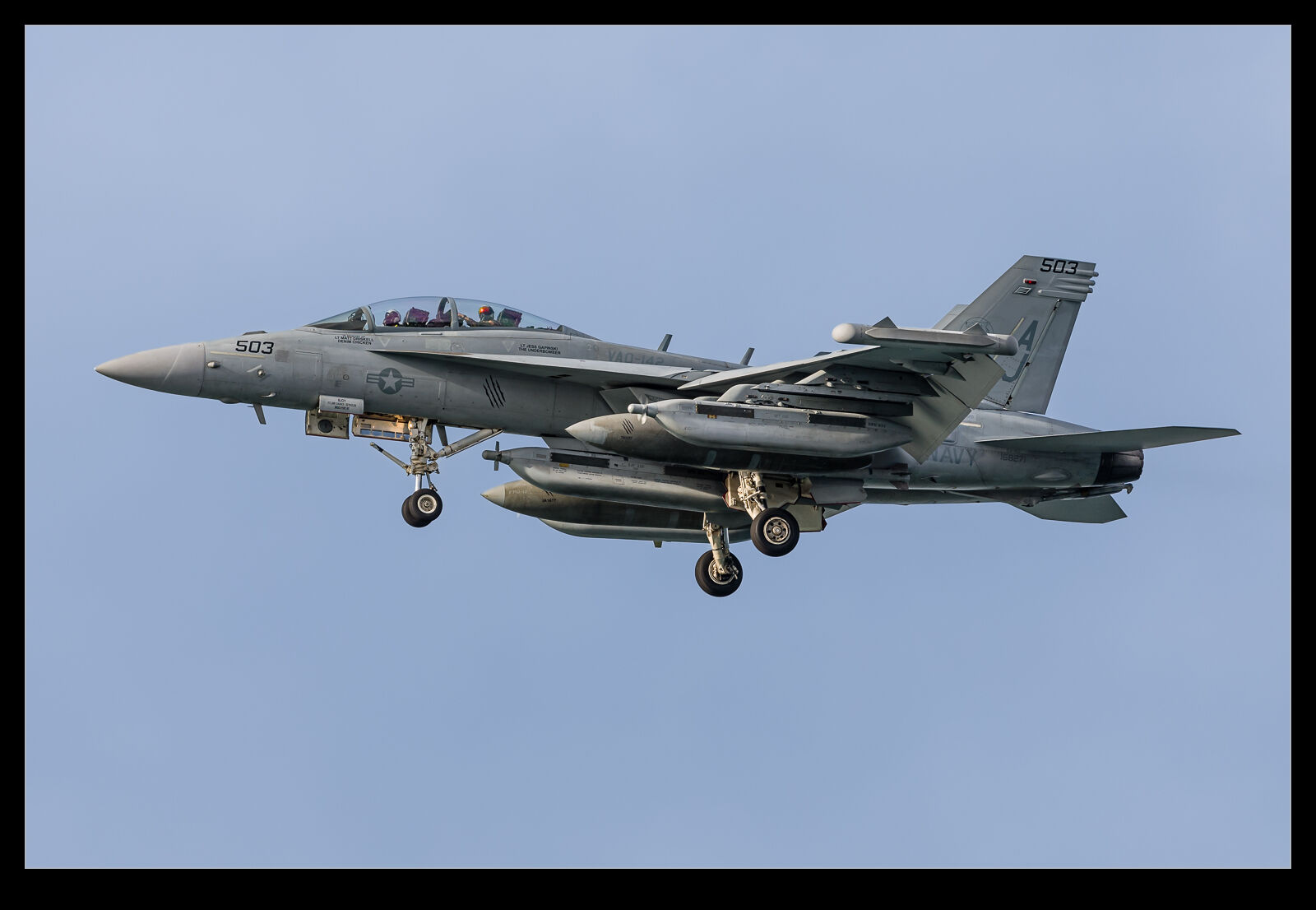 I had taken a day off to go to Coupeville earlier this year. Since I was heading to Whidbey Island for the day, I went to Ault Field at the beginning of the day to see if there was any traffic. I went to Moran Beach to see if anything was coming in when the light is still favorable in that location. I actually got pretty lucky. There were a bunch of Growlers already up and about and they were recovering before I had to move off. Some squadron jets including some in special schemes were coming in. Recovering overhead me while others were on the approach, it felt pretty busy. Here are some of the shots from that morning.
I had taken a day off to go to Coupeville earlier this year. Since I was heading to Whidbey Island for the day, I went to Ault Field at the beginning of the day to see if there was any traffic. I went to Moran Beach to see if anything was coming in when the light is still favorable in that location. I actually got pretty lucky. There were a bunch of Growlers already up and about and they were recovering before I had to move off. Some squadron jets including some in special schemes were coming in. Recovering overhead me while others were on the approach, it felt pretty busy. Here are some of the shots from that morning.
Bulgarian L39
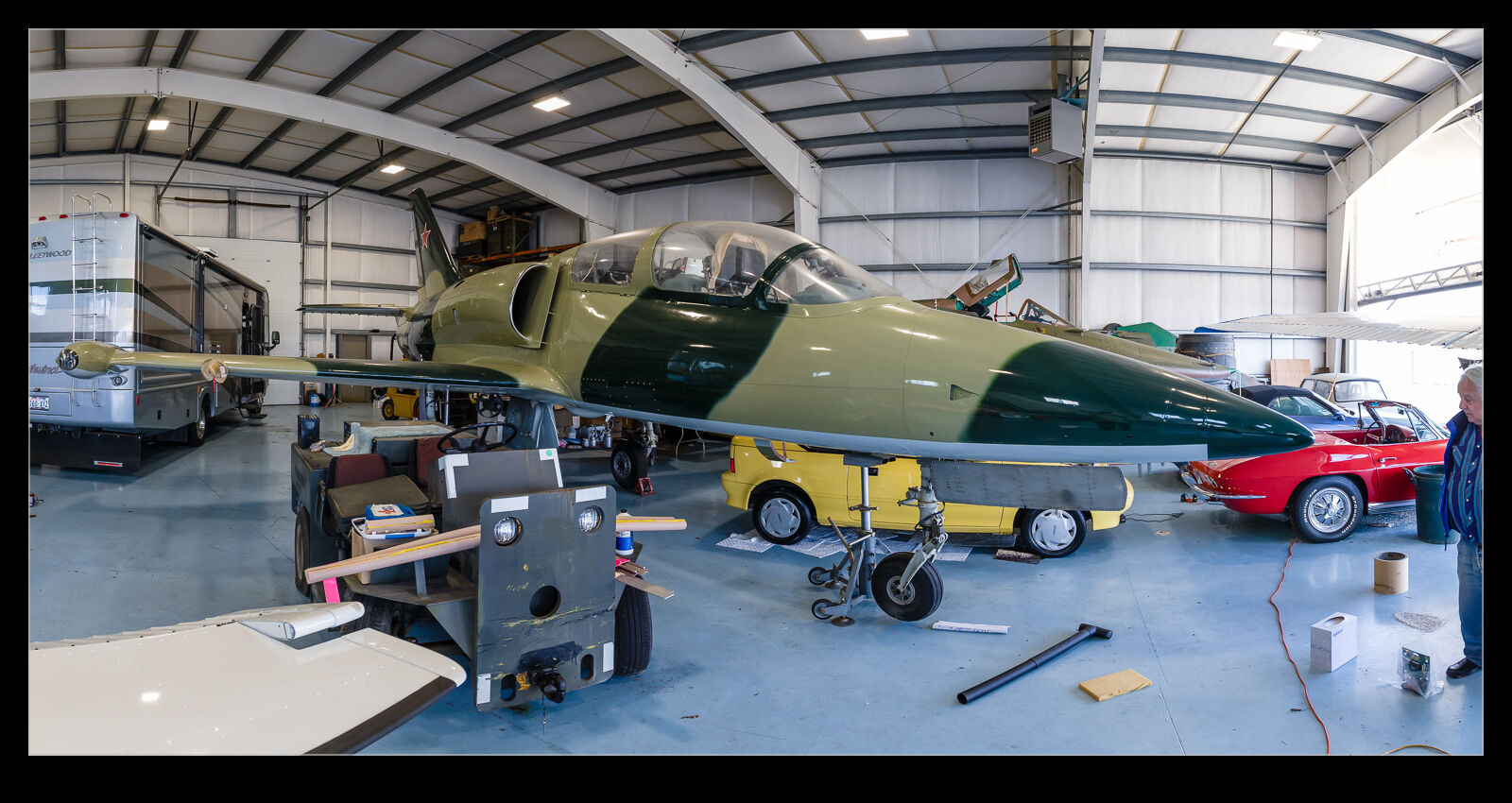 I was doing a favor for a guy I know back from Chicago. He is researching Bulgarian aircraft that have found their way to the US and one of the planes he was interested in is an L39 Albatros that lives up at not too far from me. I went up to meet with the owner and get copies of the aircraft documentation. When I was done, he offered to take me to have a look at the plane in his hangar. It is a lovely looking jet. It was in amongst a bunch of other stuff in the hangar which made getting nice shots of it a little tricky, but it was still good to get shots of it.
I was doing a favor for a guy I know back from Chicago. He is researching Bulgarian aircraft that have found their way to the US and one of the planes he was interested in is an L39 Albatros that lives up at not too far from me. I went up to meet with the owner and get copies of the aircraft documentation. When I was done, he offered to take me to have a look at the plane in his hangar. It is a lovely looking jet. It was in amongst a bunch of other stuff in the hangar which made getting nice shots of it a little tricky, but it was still good to get shots of it.
Re-Editing a B-2 Shot
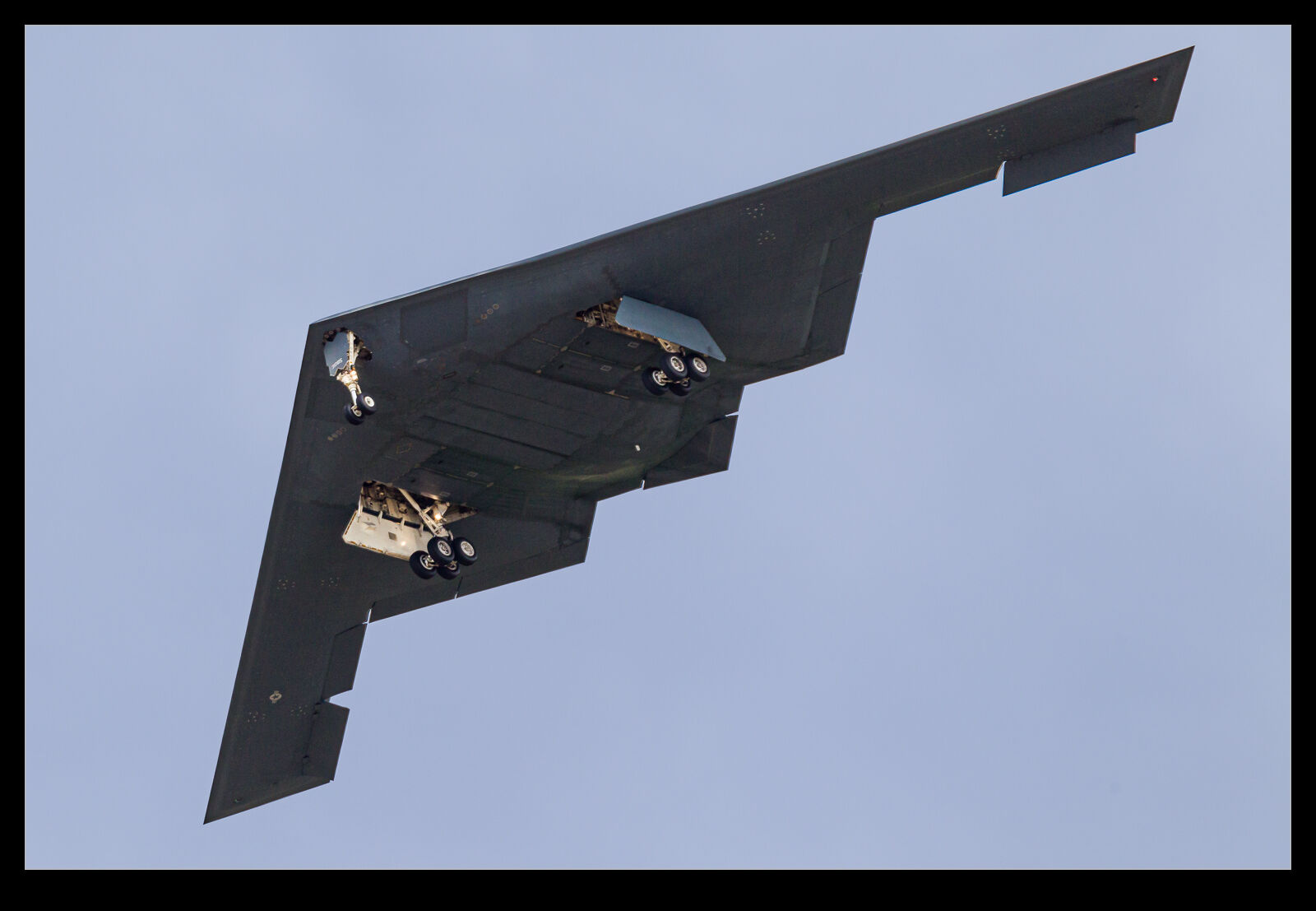 Periodically, when I am looking through my image catalog for a specific subject for one project or another, I come across some images from a while back that look okay but might benefit from some of the more recent approaches to processing that I have adopted. This doesn’t always help but it can be fun to start from scratch on a raw file and then see whether the final version is any better than the previous attempt. I created a new virtual copy in Lightroom and zero out all of the sliders, upgrade to the latest processing version and give it a go.
Periodically, when I am looking through my image catalog for a specific subject for one project or another, I come across some images from a while back that look okay but might benefit from some of the more recent approaches to processing that I have adopted. This doesn’t always help but it can be fun to start from scratch on a raw file and then see whether the final version is any better than the previous attempt. I created a new virtual copy in Lightroom and zero out all of the sliders, upgrade to the latest processing version and give it a go.
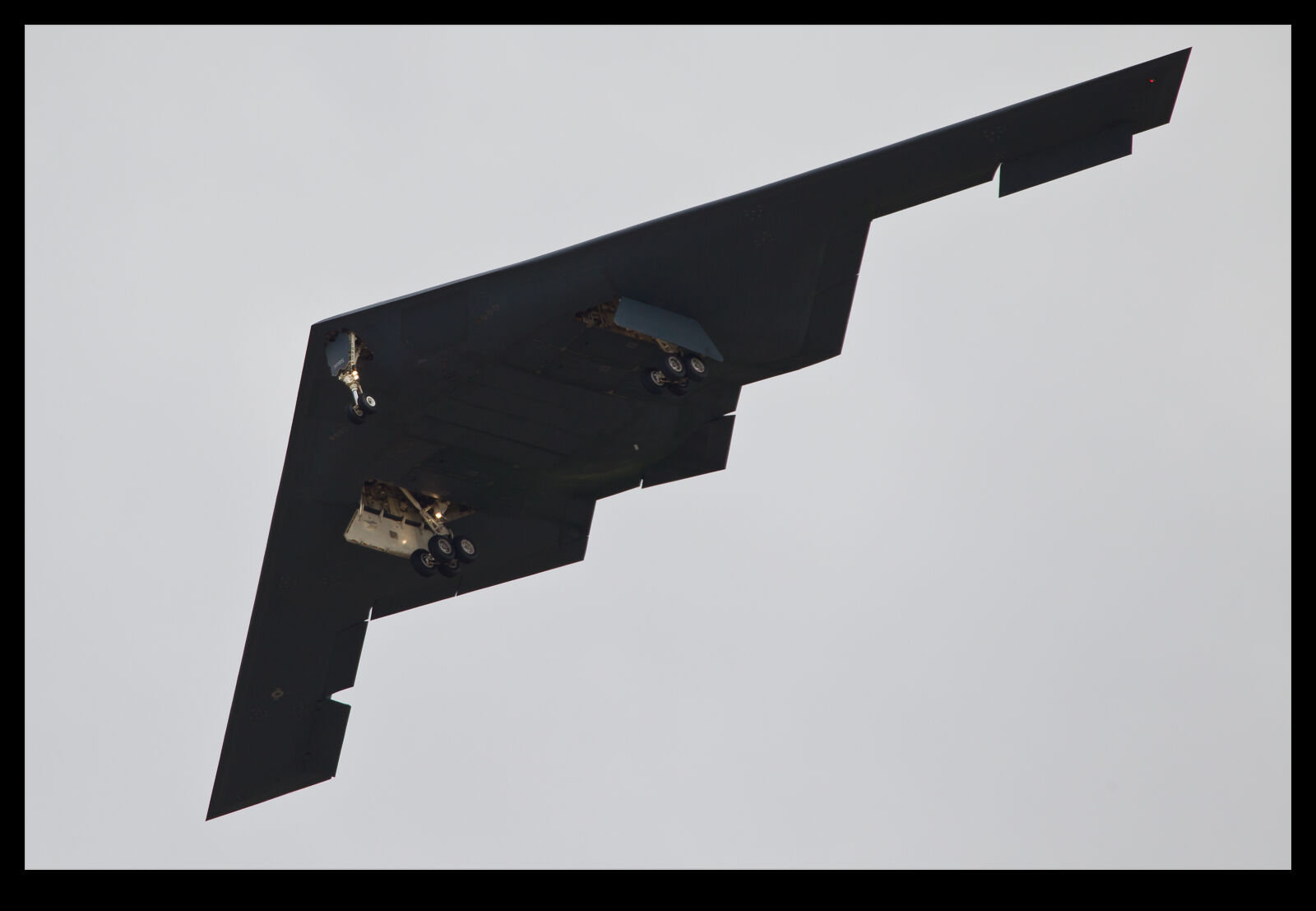 I did this a little while ago on a shot of a Northrop Grumman B-2 Spirit. I shot this jet at Palmdale many years ago on a visit with my friend, Paul. The shots were okay, and I was happy with them at the time. Here I shall show you the current version first and then the next one down is the previous result of my processing from when it was shot. Do you think it is a significant change?
I did this a little while ago on a shot of a Northrop Grumman B-2 Spirit. I shot this jet at Palmdale many years ago on a visit with my friend, Paul. The shots were okay, and I was happy with them at the time. Here I shall show you the current version first and then the next one down is the previous result of my processing from when it was shot. Do you think it is a significant change?
Bristol Britannia
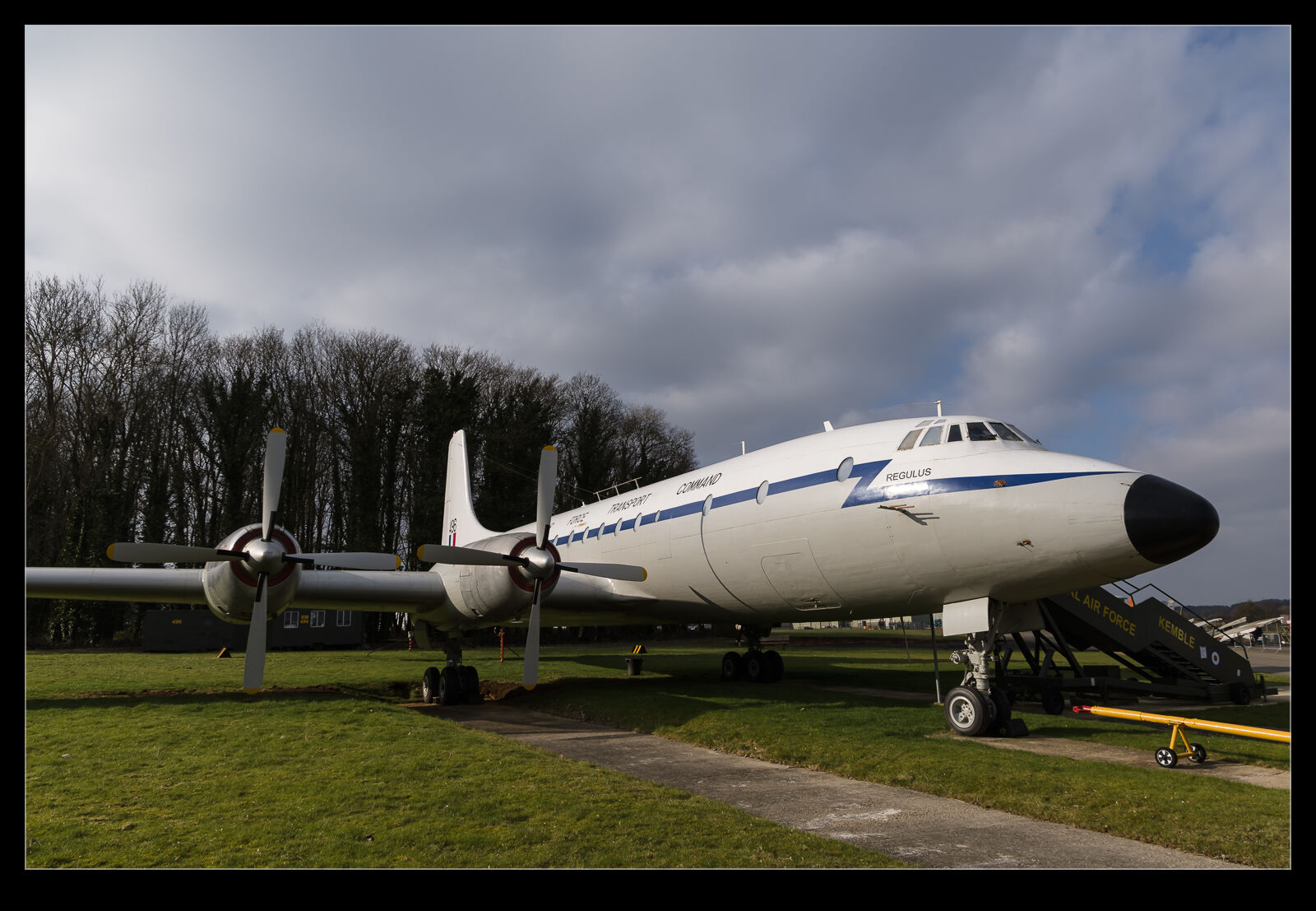 There are many aircraft that the British aircraft industry produced in the middle to late 20th century that did not end up being terribly successful. There was the occasional commercial product in there but a lot that did not have large production numbers, even by the standards of the day. It was not unusual for the Royal Air Force to end up operating a few of these as the government of the day found a way to prop up an ailing manufacturer. One type like this was the Bristol Britannia.
There are many aircraft that the British aircraft industry produced in the middle to late 20th century that did not end up being terribly successful. There was the occasional commercial product in there but a lot that did not have large production numbers, even by the standards of the day. It was not unusual for the Royal Air Force to end up operating a few of these as the government of the day found a way to prop up an ailing manufacturer. One type like this was the Bristol Britannia.
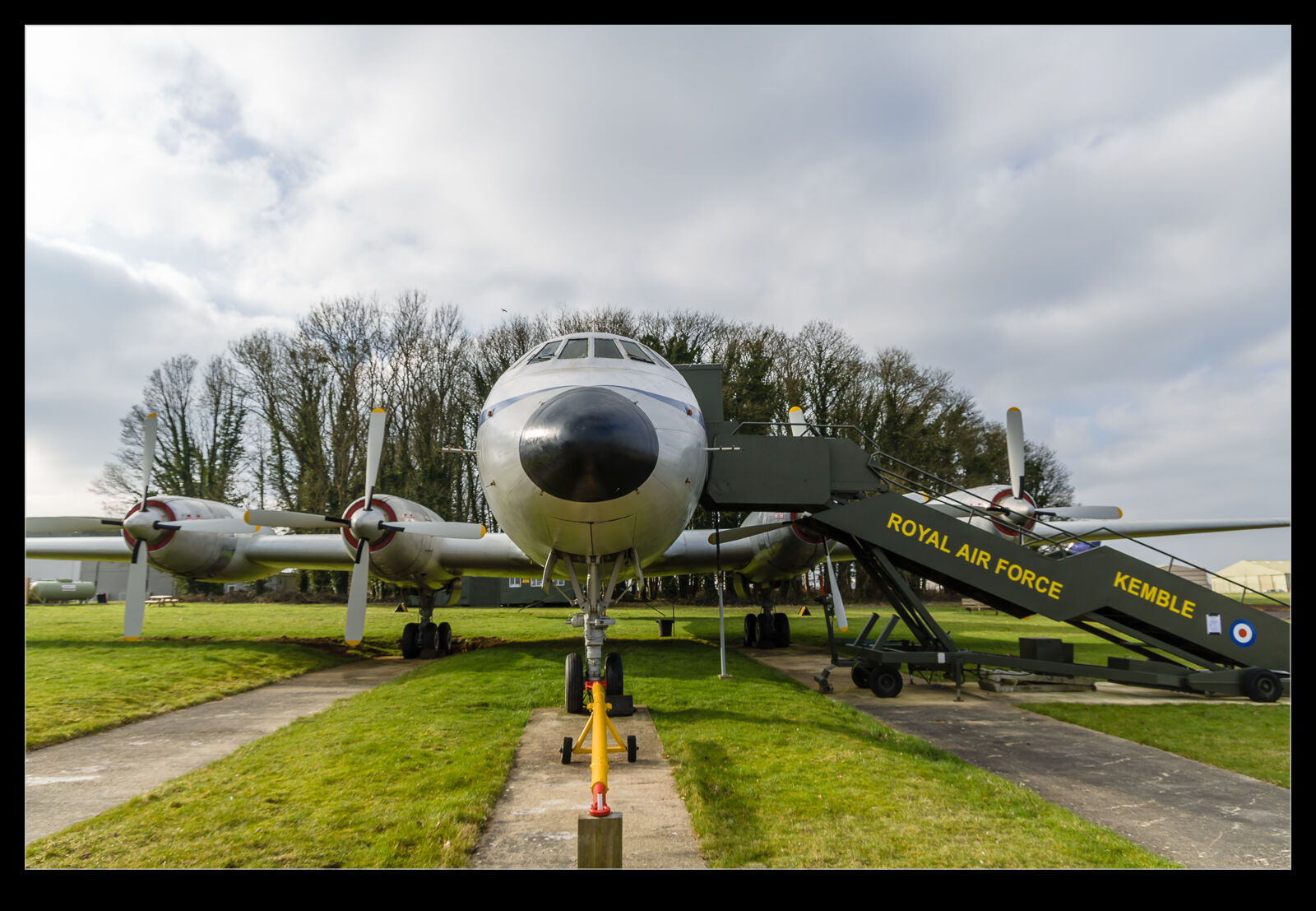 A turboprop airliner, it was too large given that jets had taken over the market by the time it was coming into service. The Royal Air Force was the “willing” recipient of some of these airframes and, for transporting troops that didn’t have a choice in the matter, they were probably just fine. One of these airframes, Regulus, is not preserved at Cotswold Airport at Kemble in Gloucestershire. I didn’t know it was there until I was driving around the airport killing some time. It looks to be in great condition. I don’t know how well it is handling the corrosion risk that damp UK airfields offer but I hope it lasts a long time. There are a few of these around but not many.
A turboprop airliner, it was too large given that jets had taken over the market by the time it was coming into service. The Royal Air Force was the “willing” recipient of some of these airframes and, for transporting troops that didn’t have a choice in the matter, they were probably just fine. One of these airframes, Regulus, is not preserved at Cotswold Airport at Kemble in Gloucestershire. I didn’t know it was there until I was driving around the airport killing some time. It looks to be in great condition. I don’t know how well it is handling the corrosion risk that damp UK airfields offer but I hope it lasts a long time. There are a few of these around but not many.
VISTA X-62
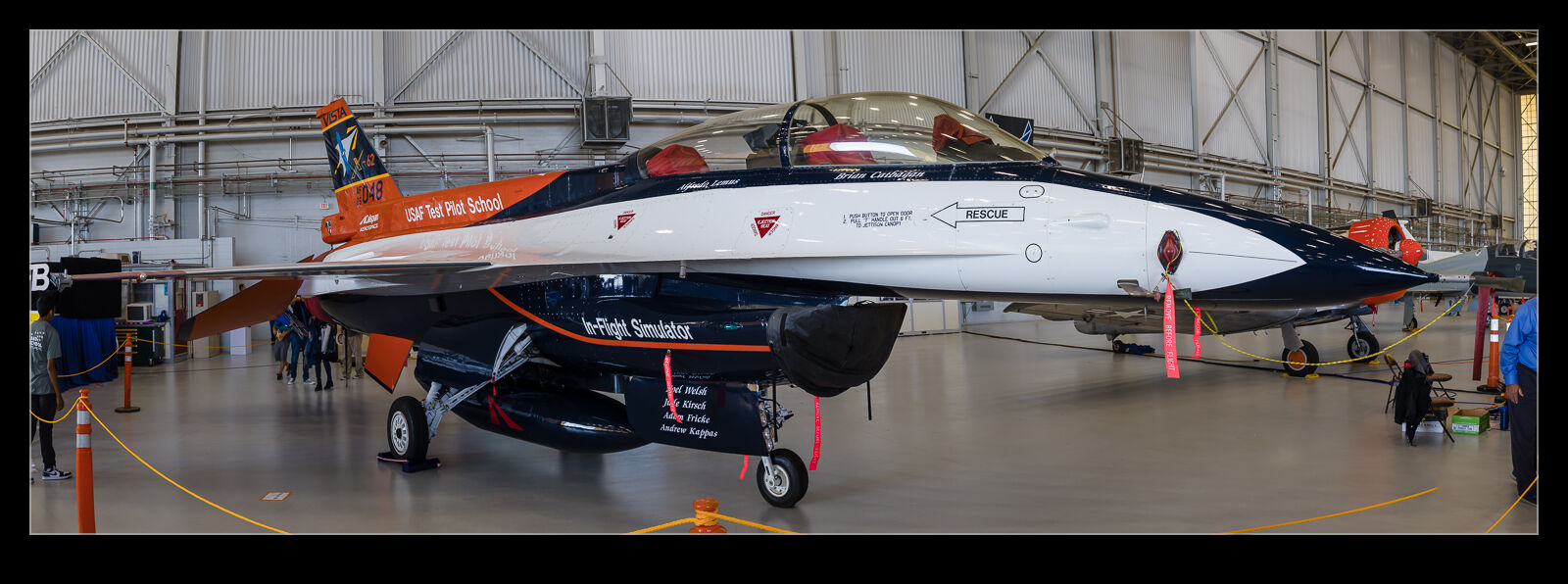 The Antelope Valley Airshow at Edwards AFB last year gave access to some very unusual airframes including some unique types. In the 90s, an F-16D airframe was converted into a variable stability testbed. It was used for test pilot training but also became a testbed for other technologies. Known as VISTA, it also tested a thrust vectoring nozzle on the engine as MATV, performing some amazing maneuvers. I know one of the test pilots that flew it including when it misbehaved!
The Antelope Valley Airshow at Edwards AFB last year gave access to some very unusual airframes including some unique types. In the 90s, an F-16D airframe was converted into a variable stability testbed. It was used for test pilot training but also became a testbed for other technologies. Known as VISTA, it also tested a thrust vectoring nozzle on the engine as MATV, performing some amazing maneuvers. I know one of the test pilots that flew it including when it misbehaved!
The aircraft continues to be used for new developments and, relatively recently, it was re-designated to be an X-plane. It is now known as the X-62 while continuing to perform some of its original test pilot training roles. It was on display in one of the hangars at Edwards. It was a bit hard to get good shots of it since everything was rather crowded, but I was able to get a few that I was happy with.
